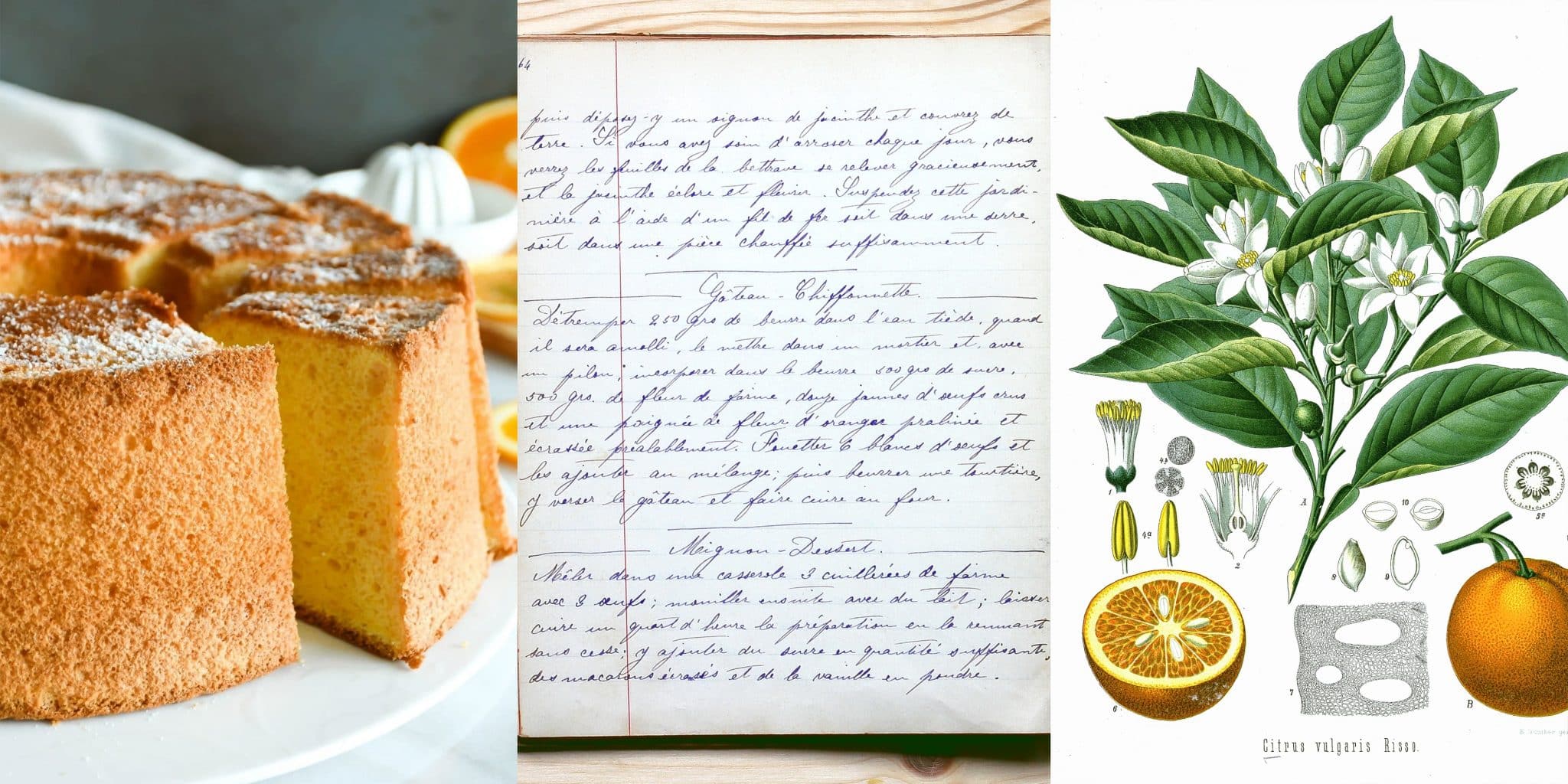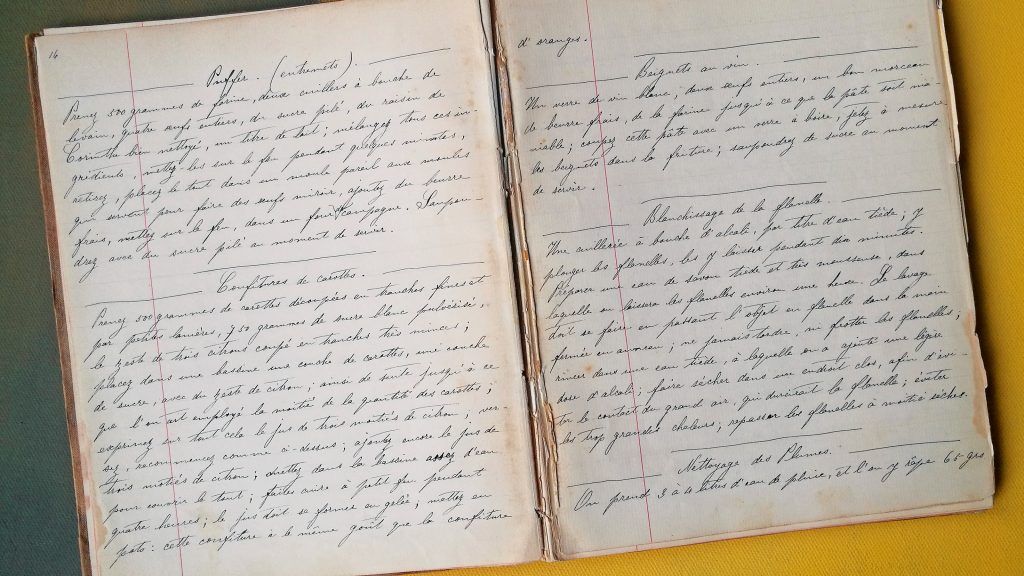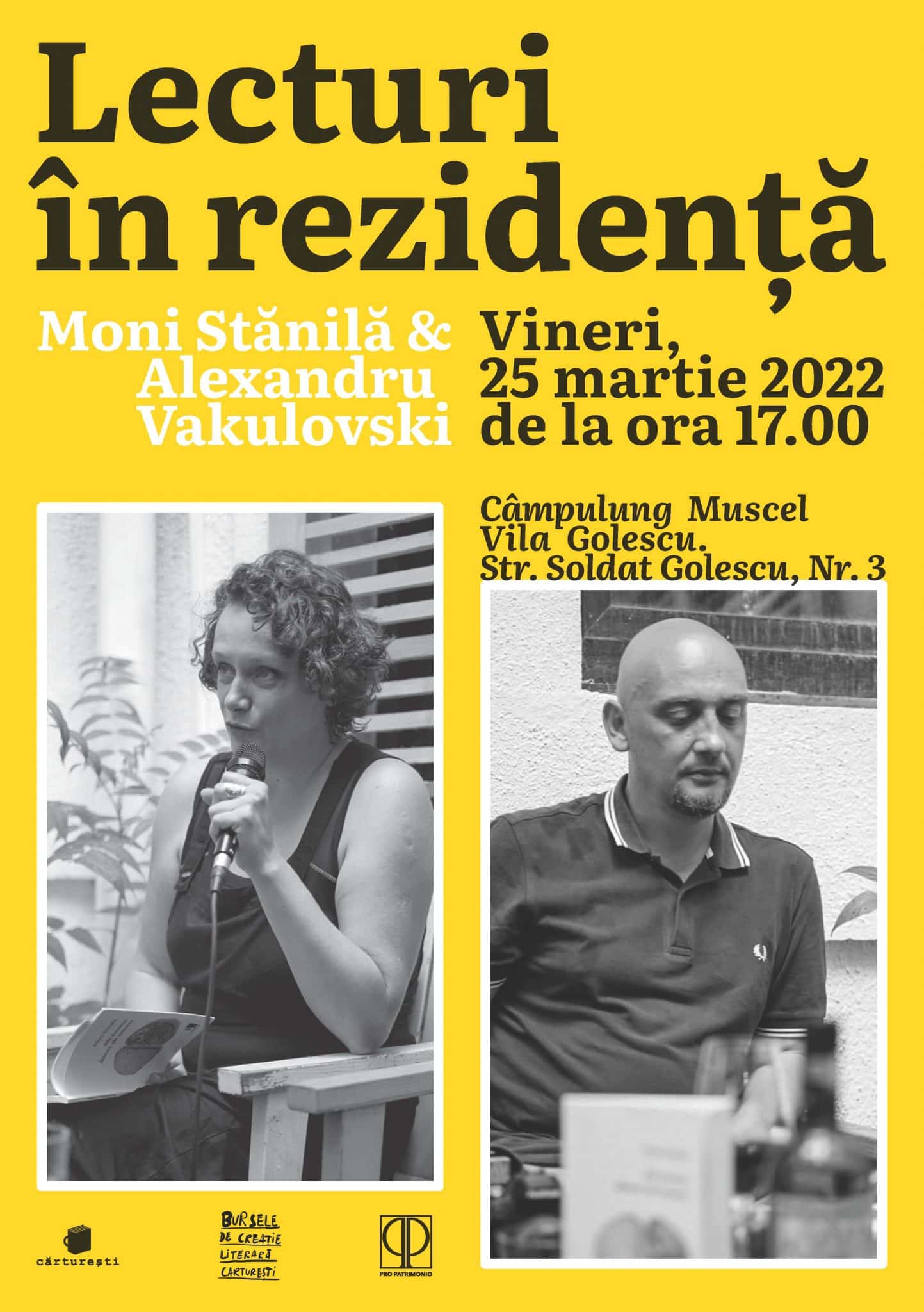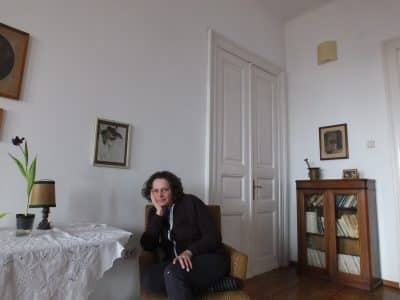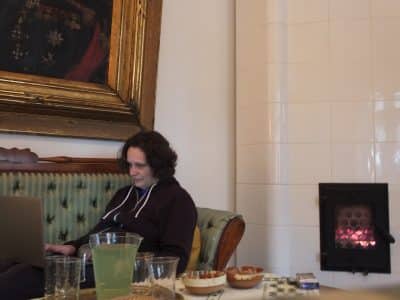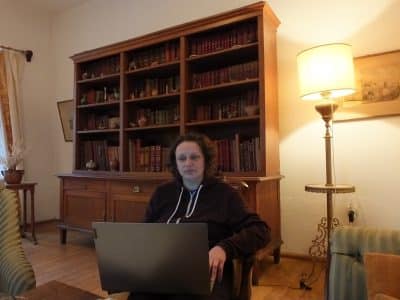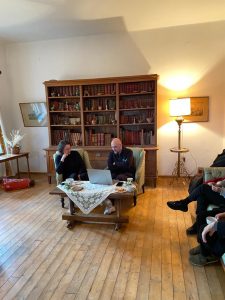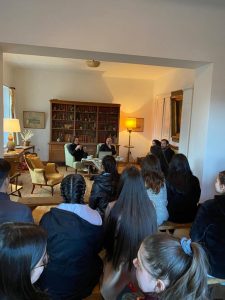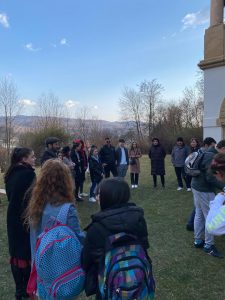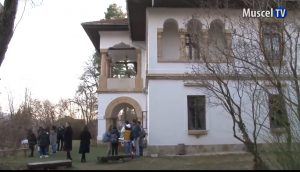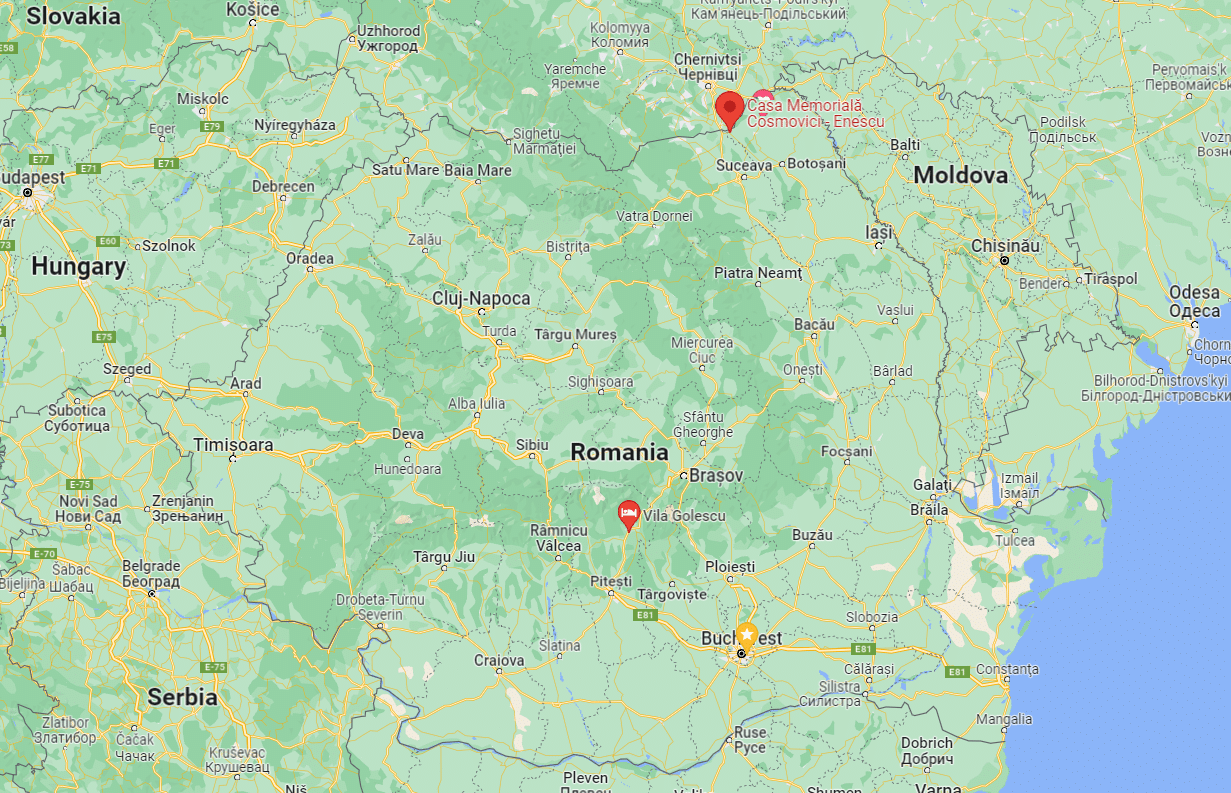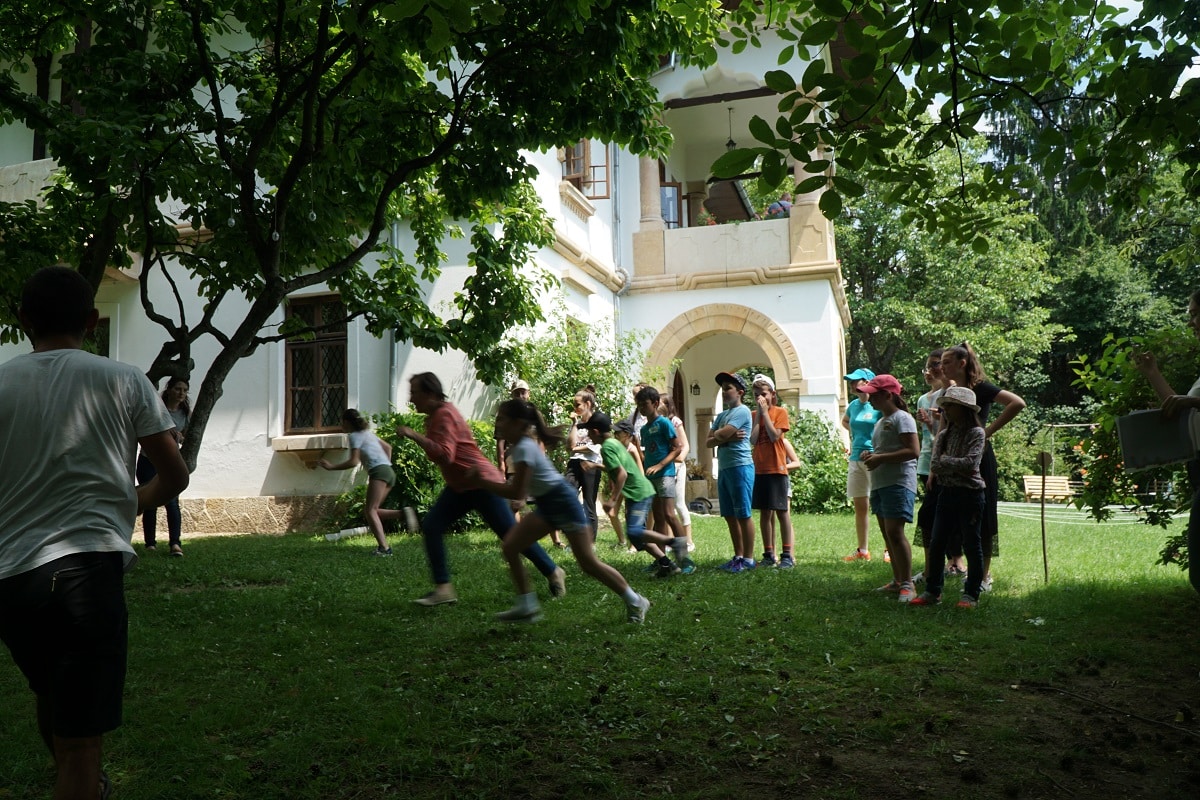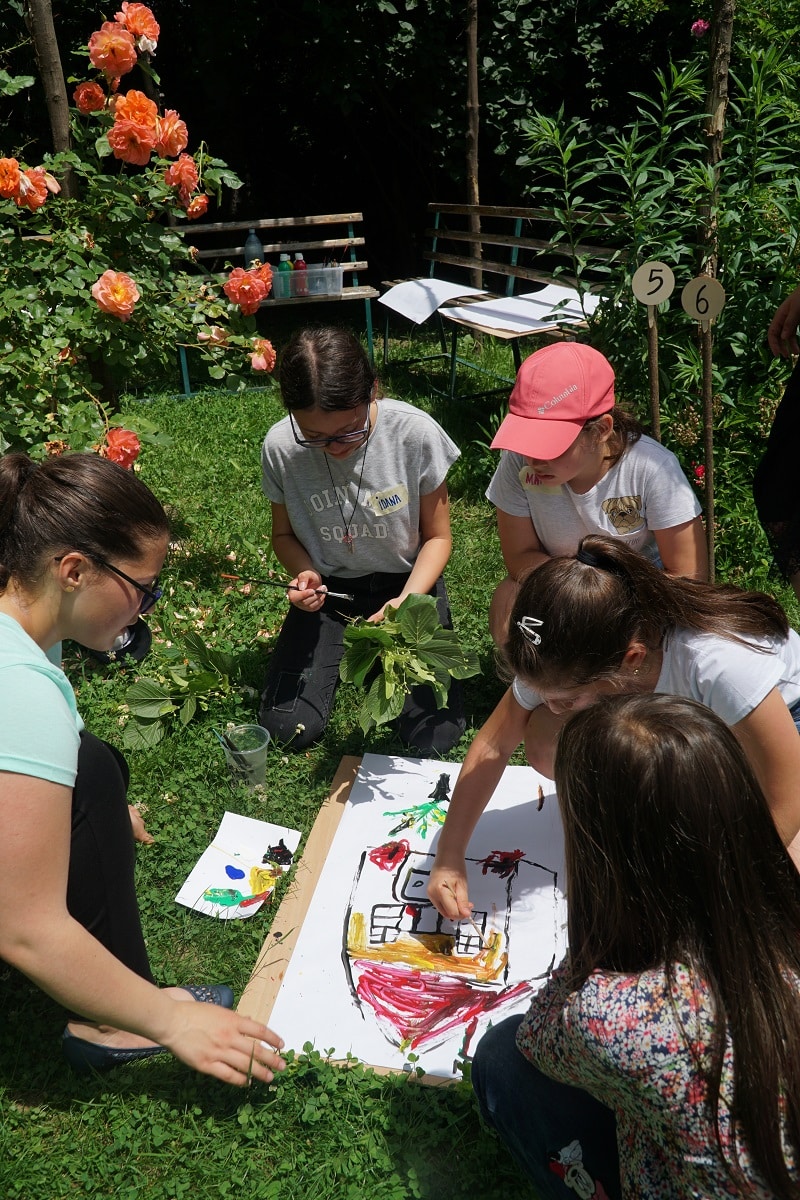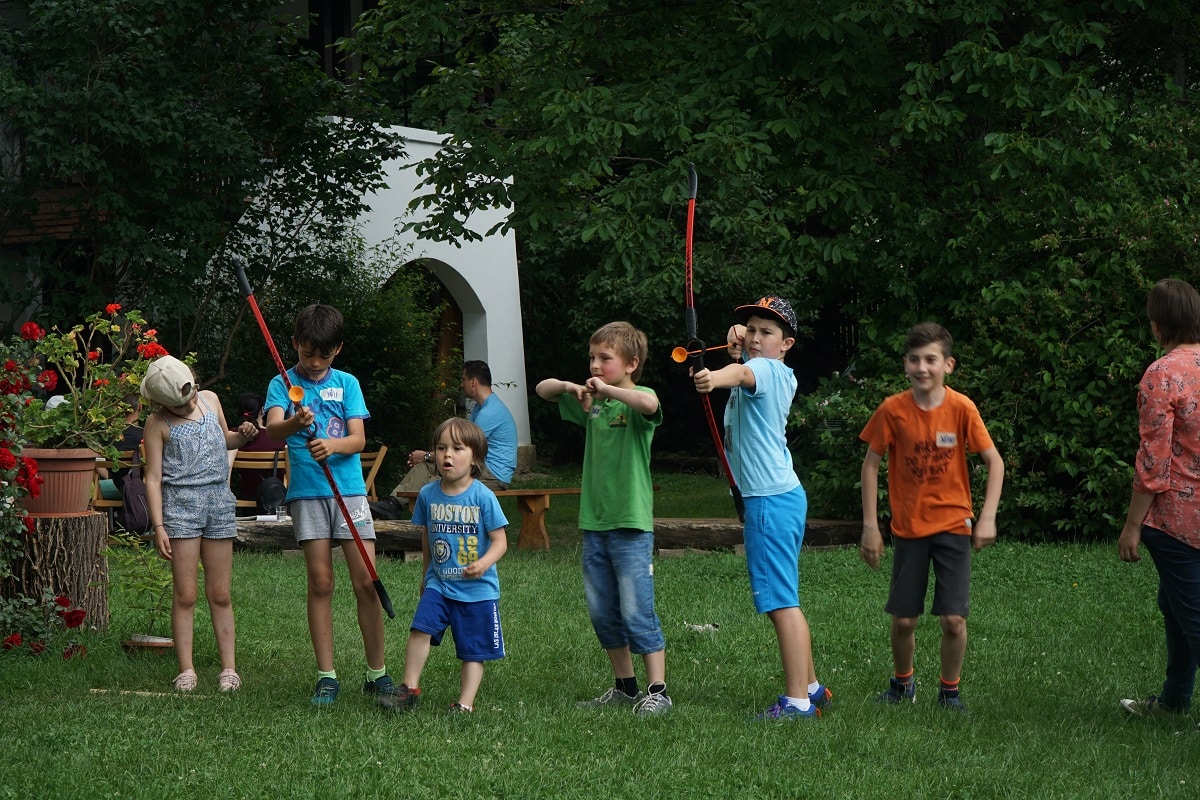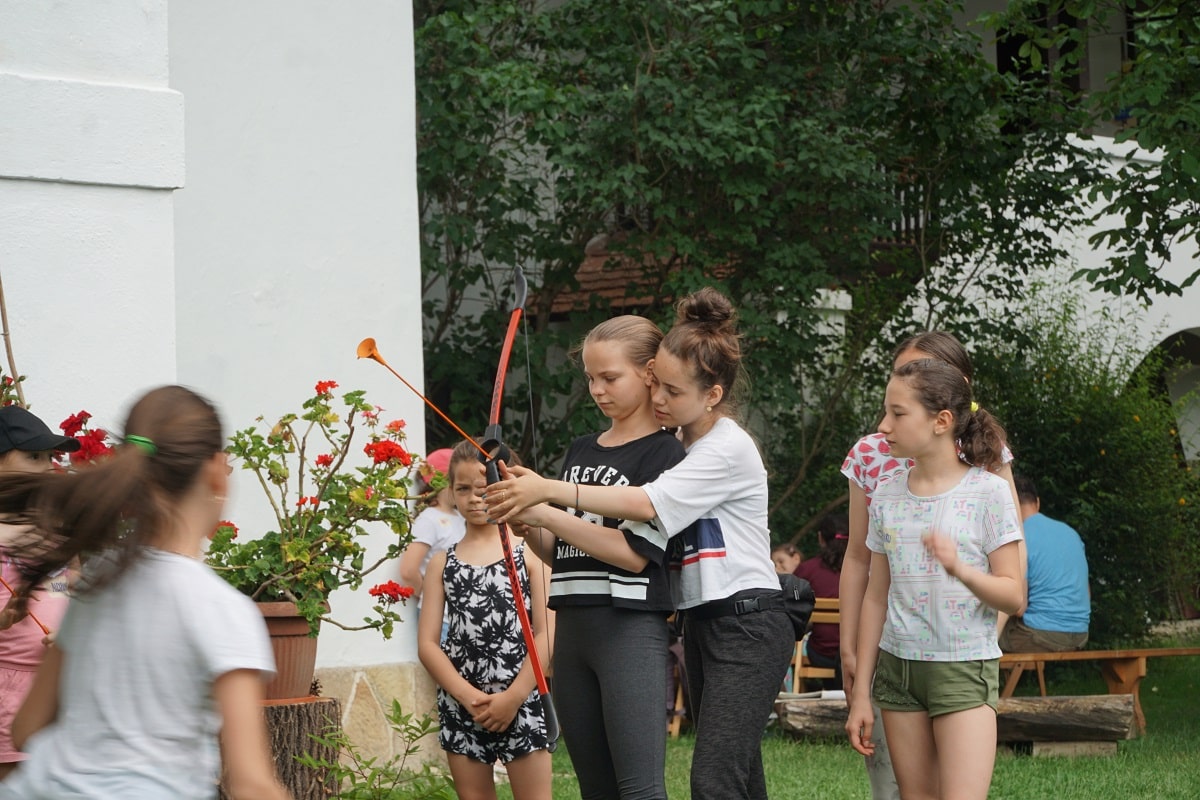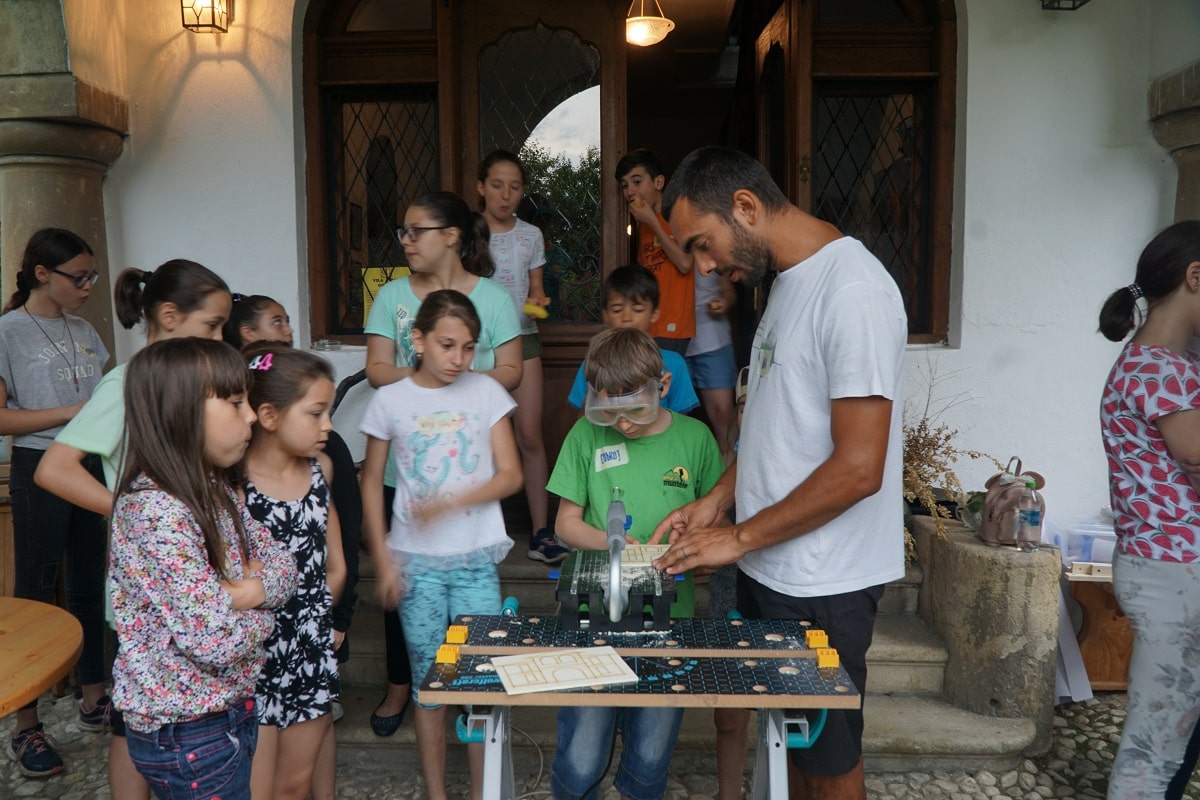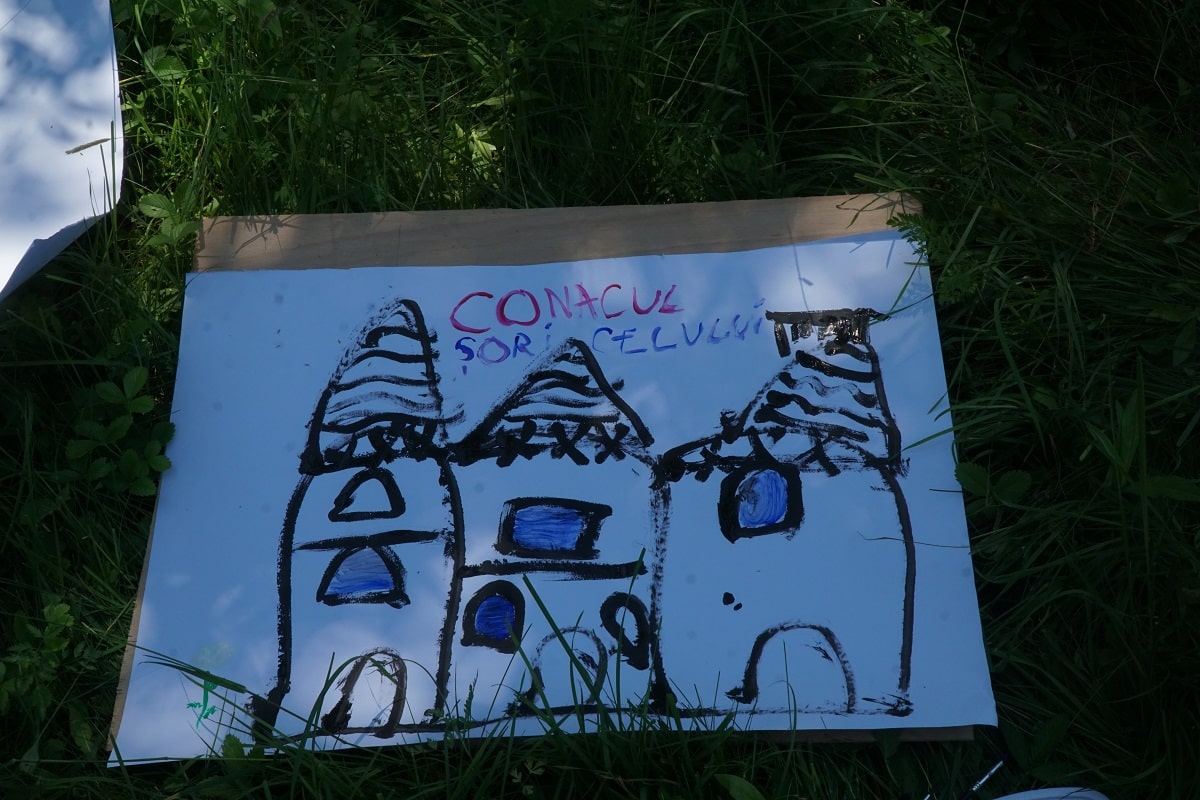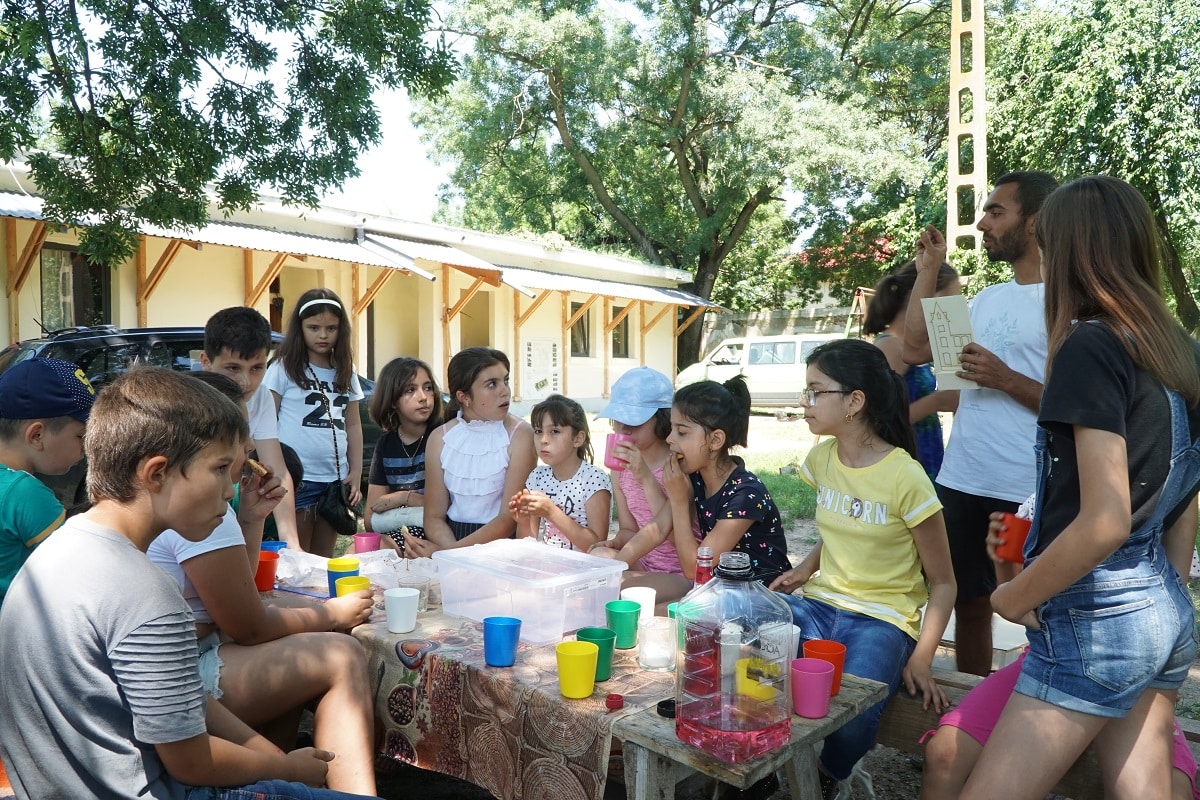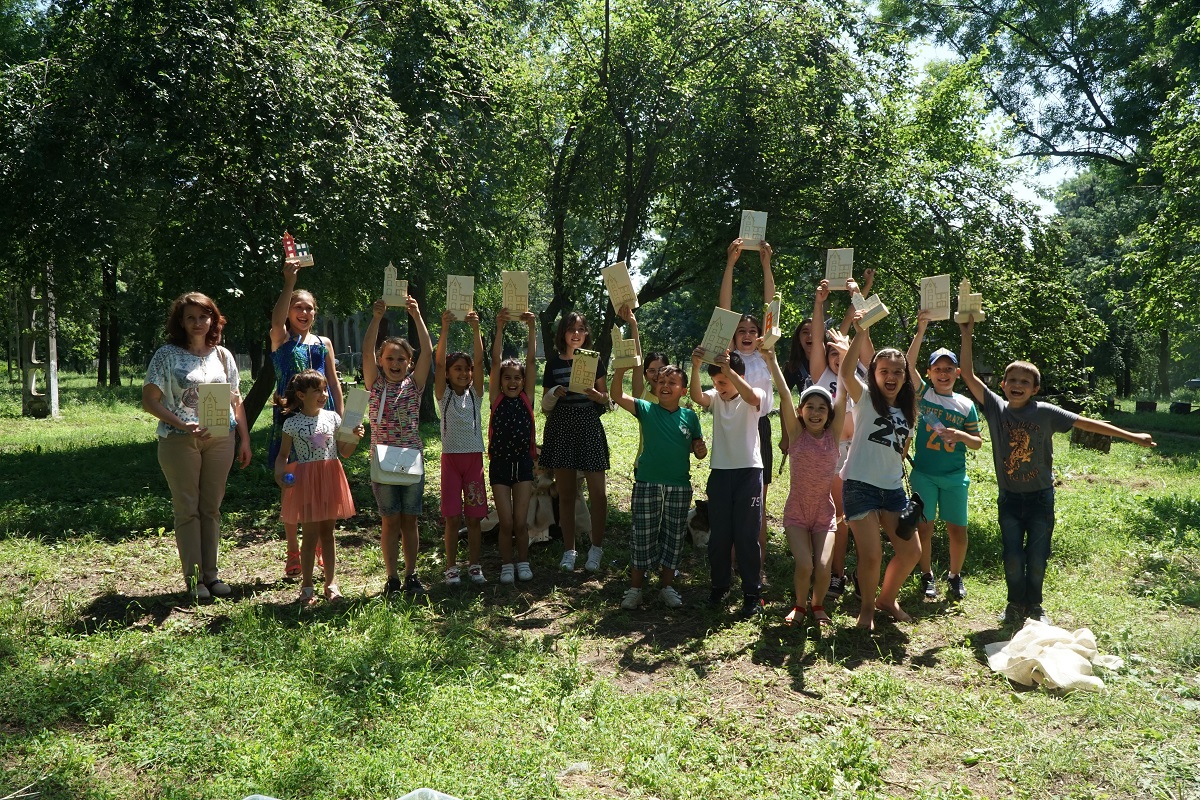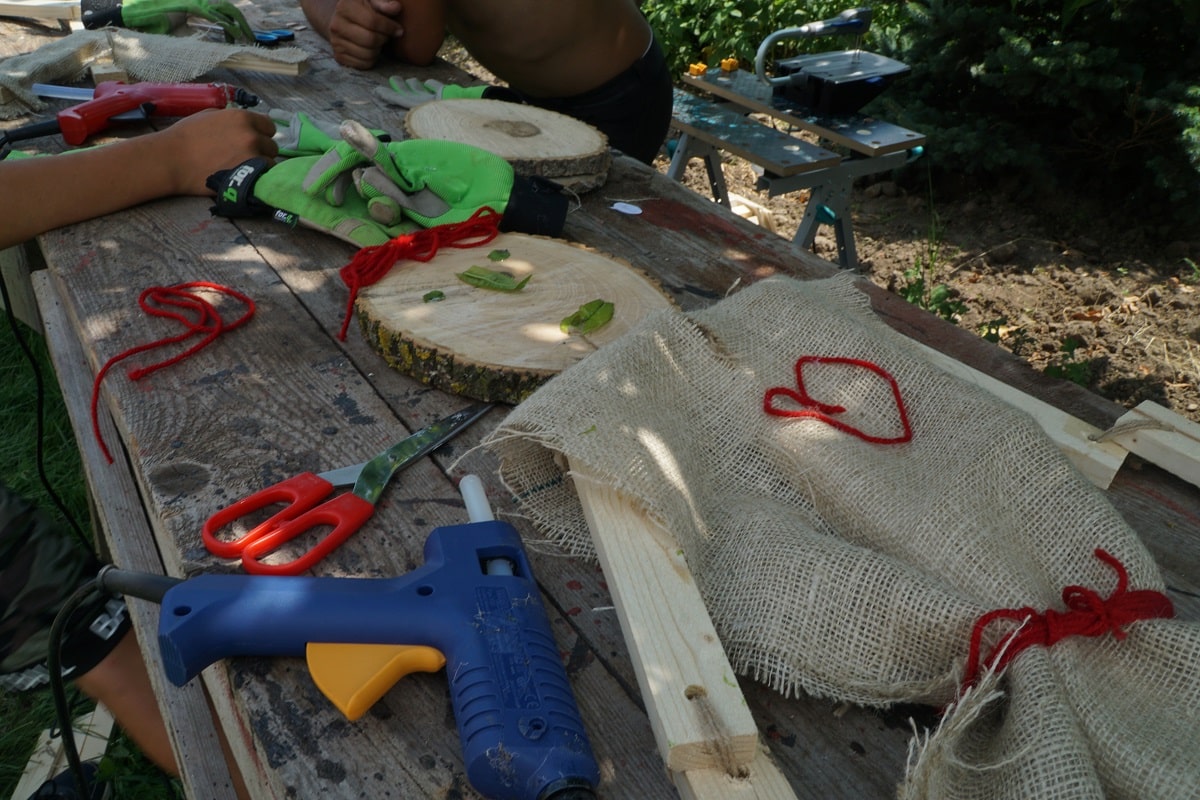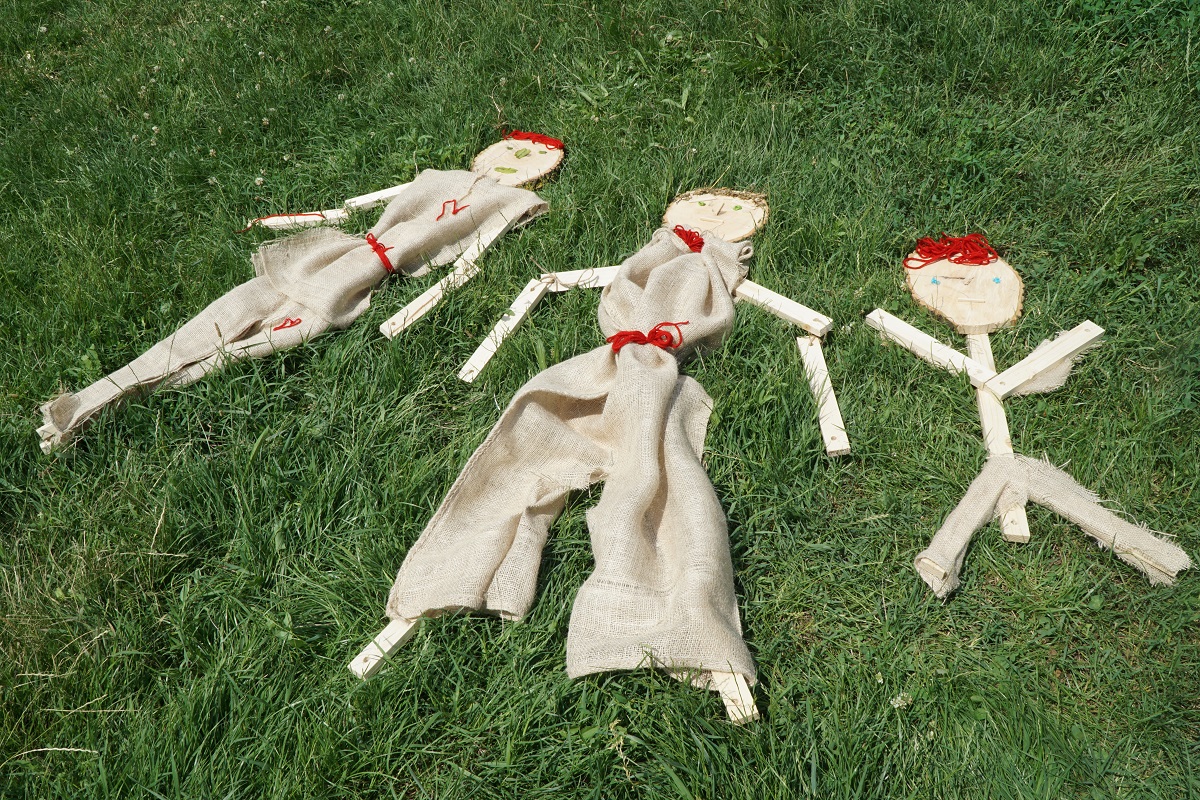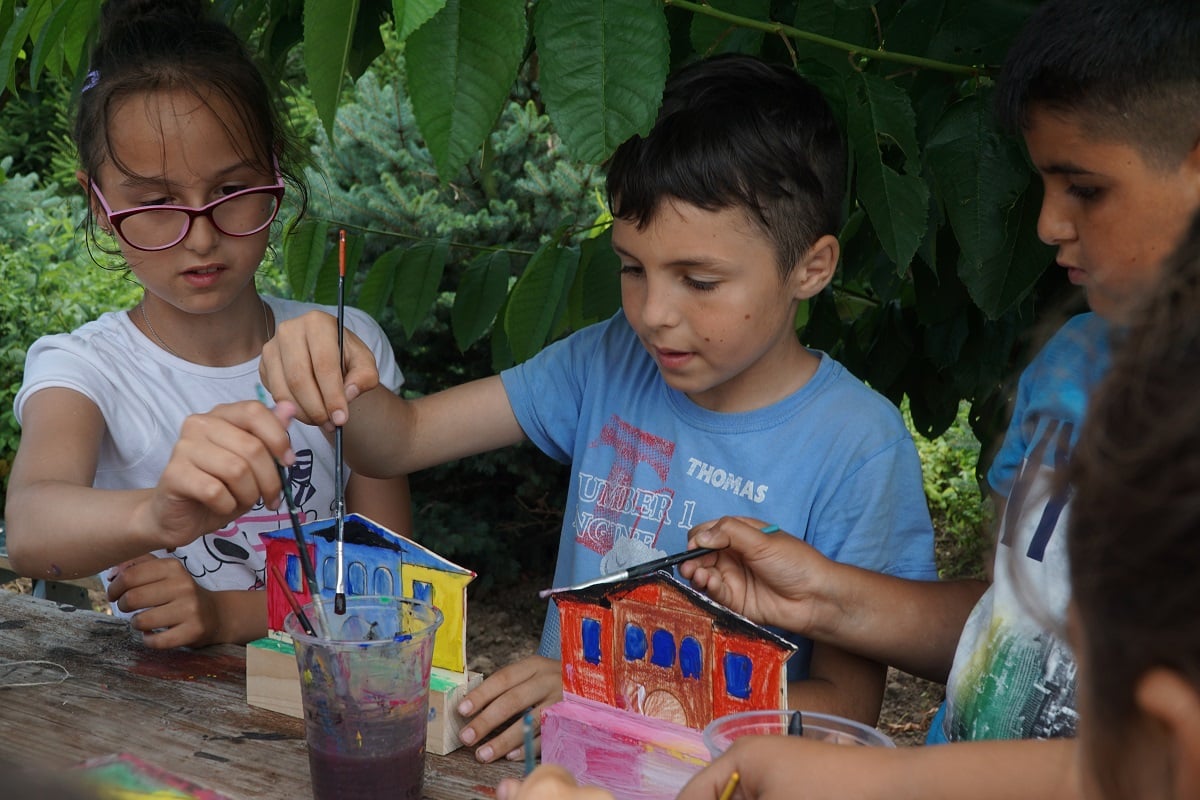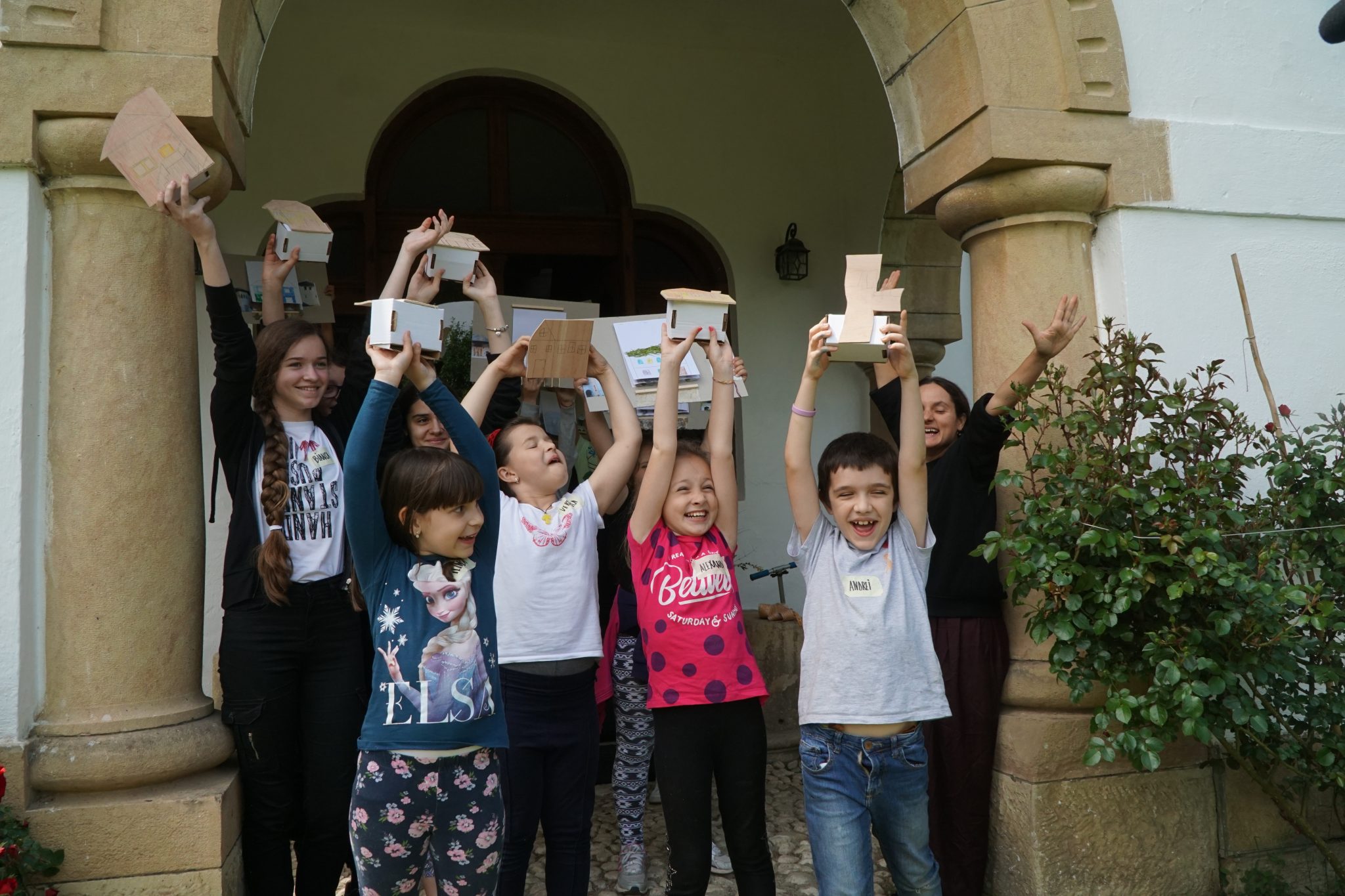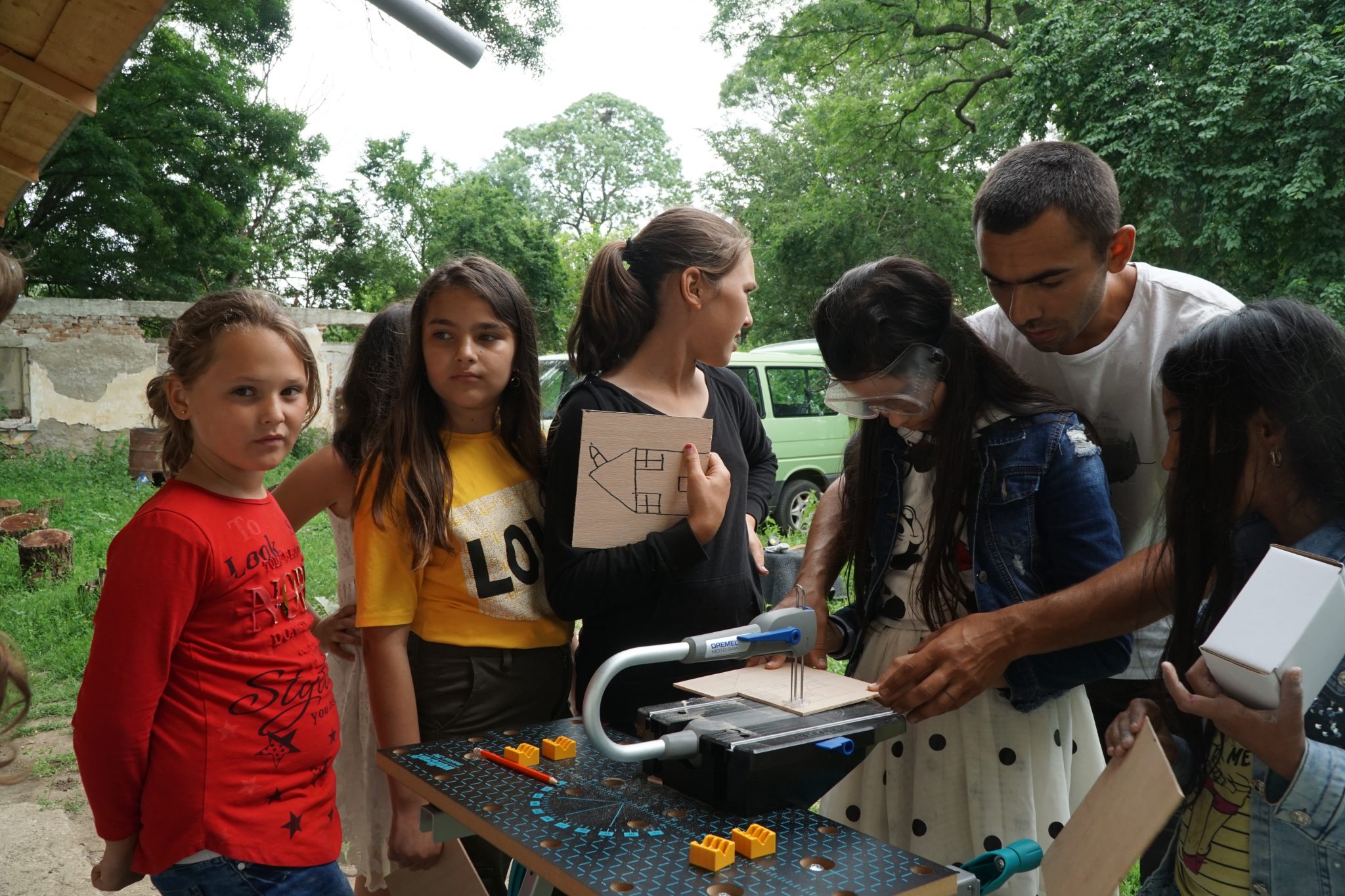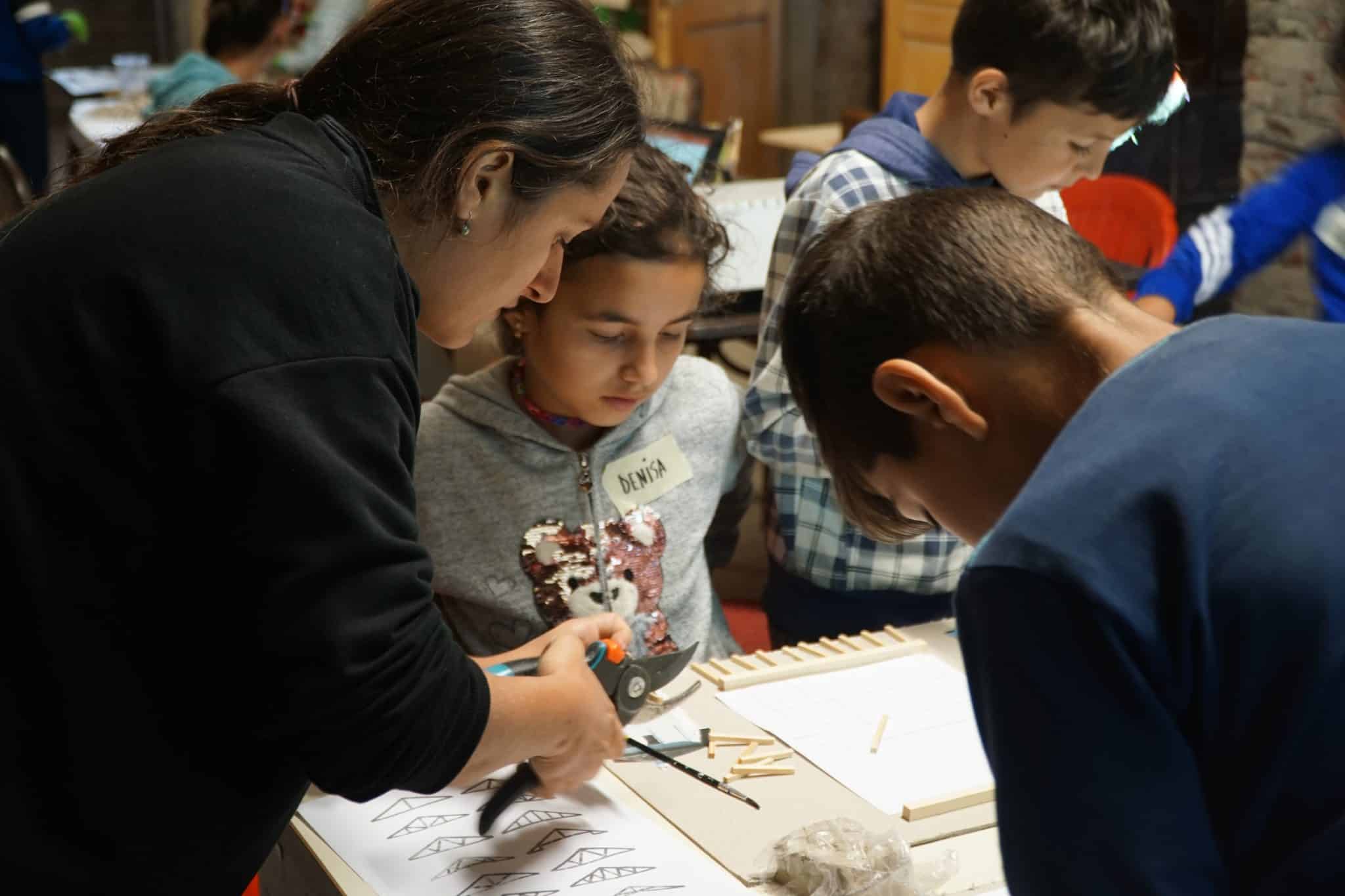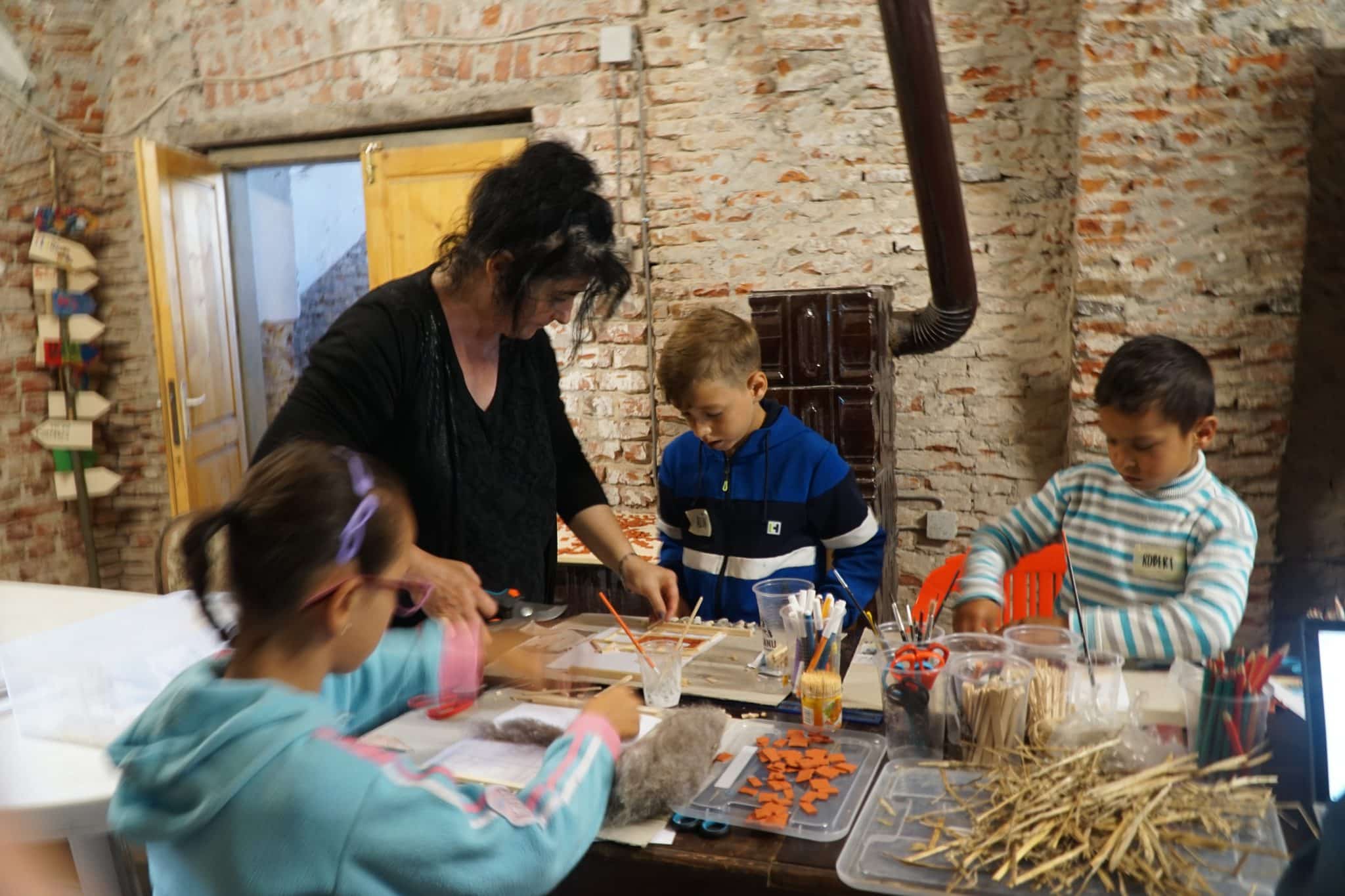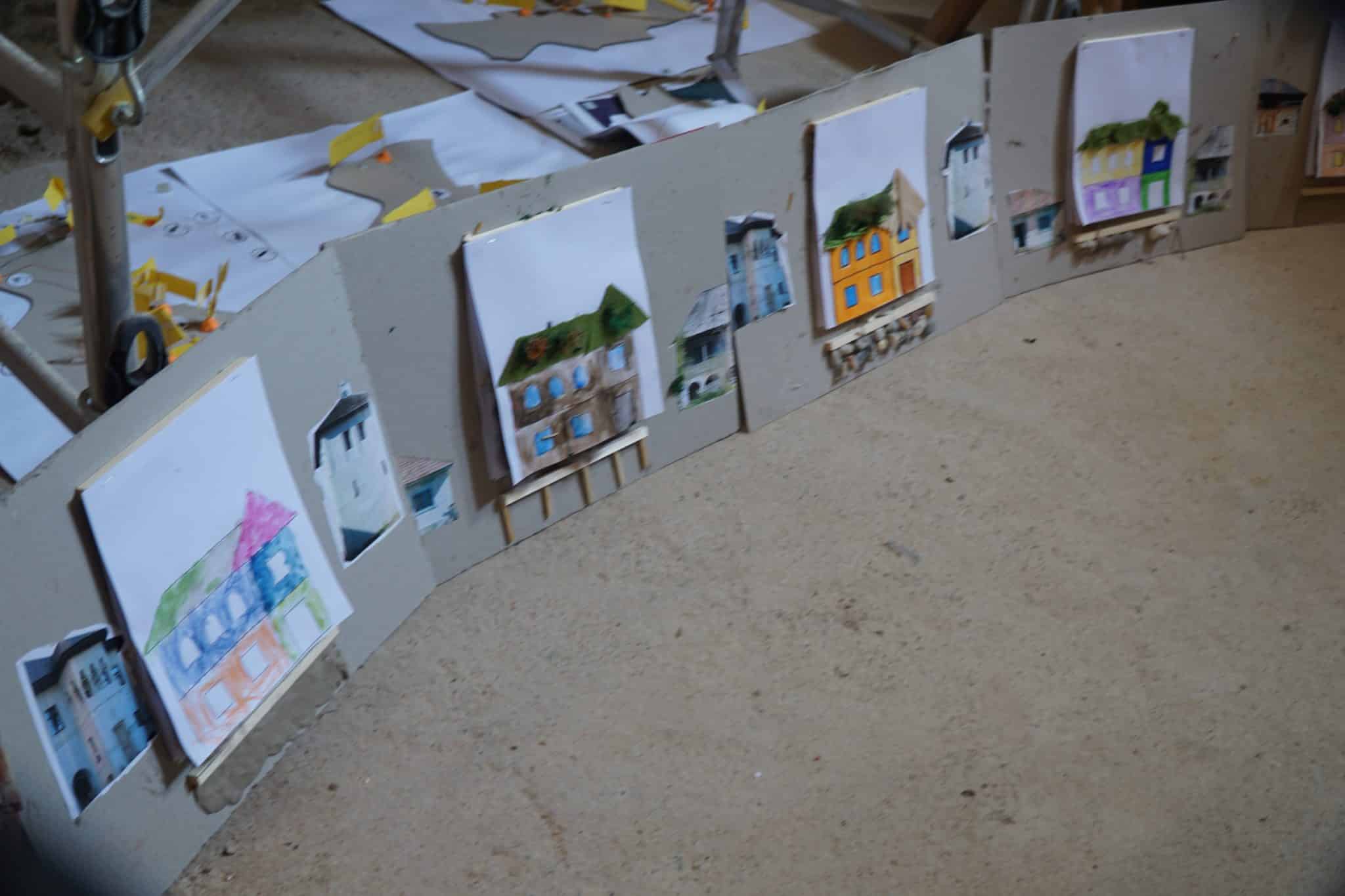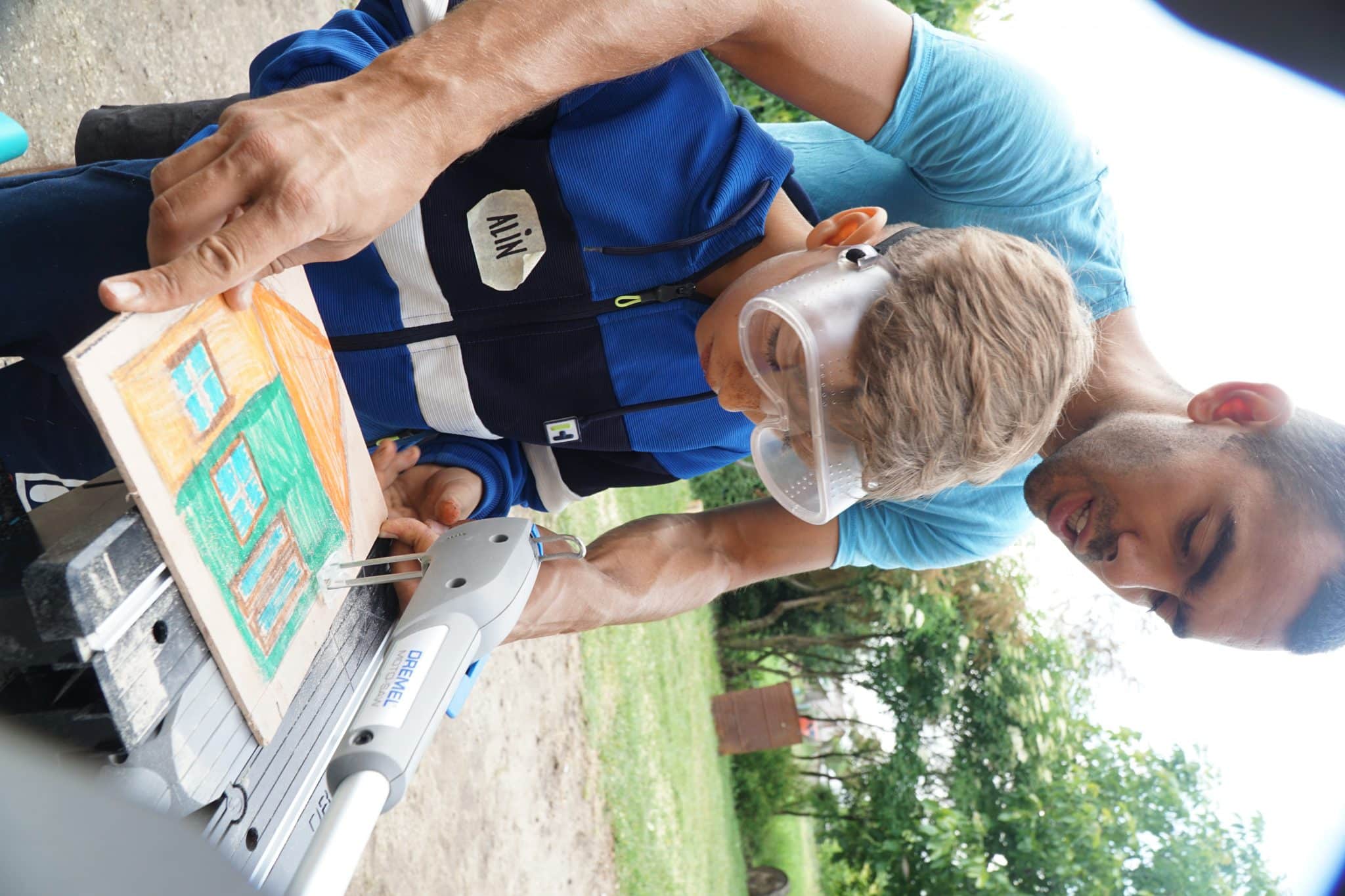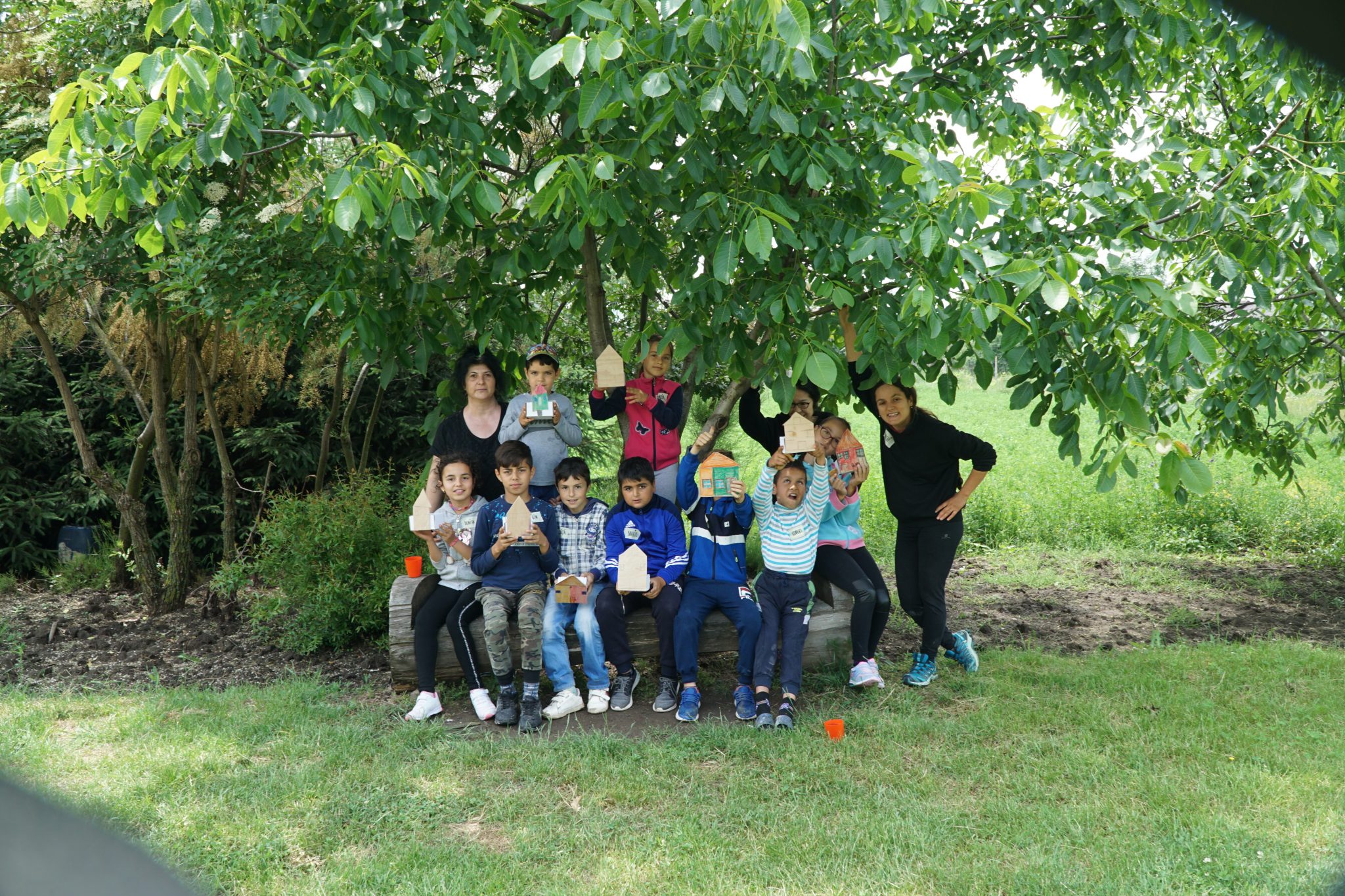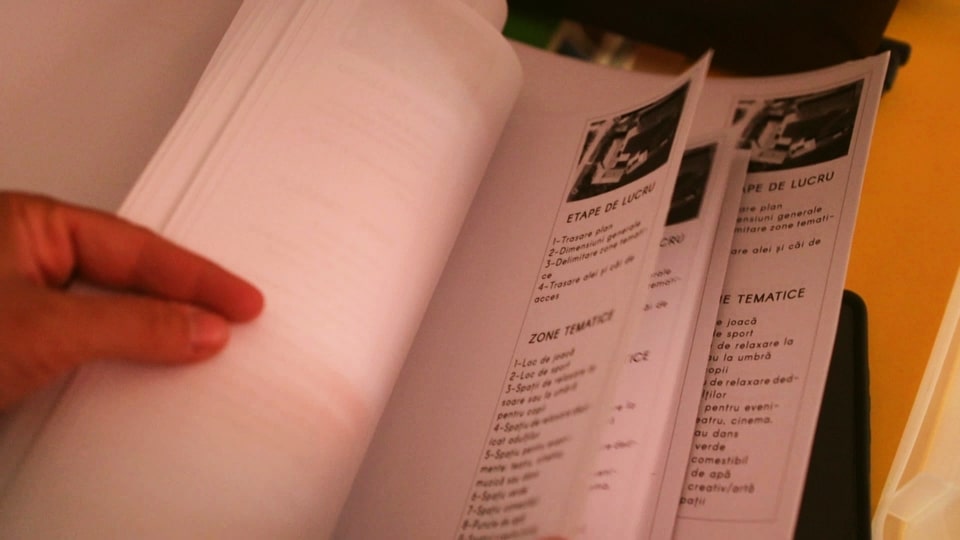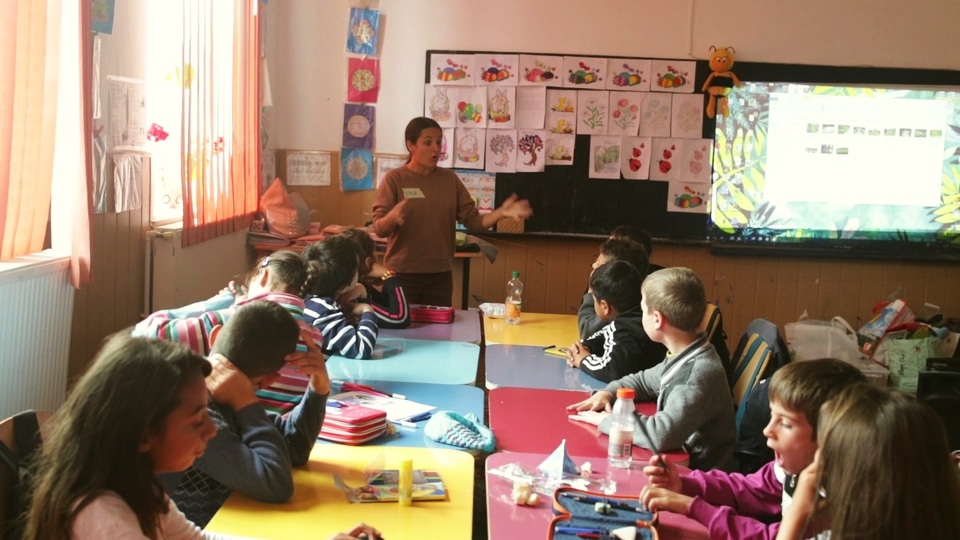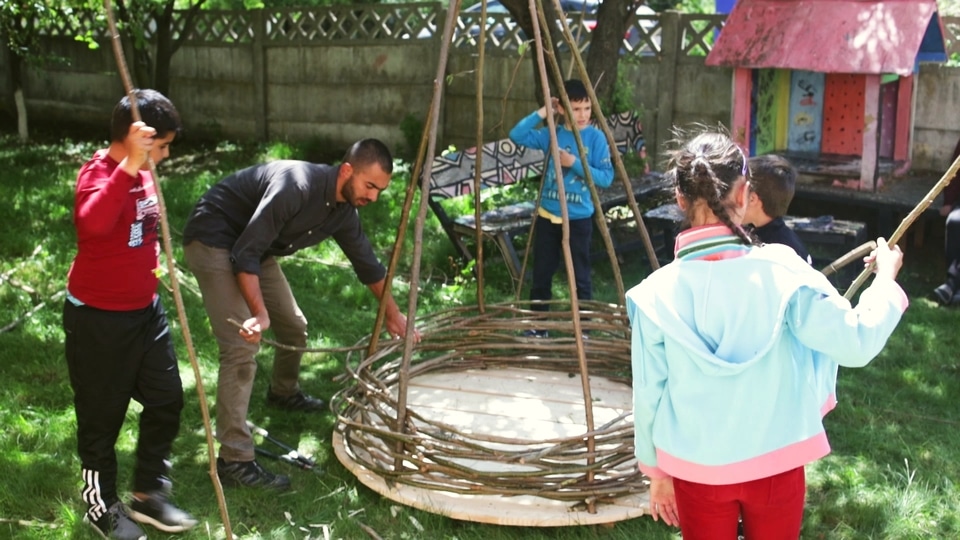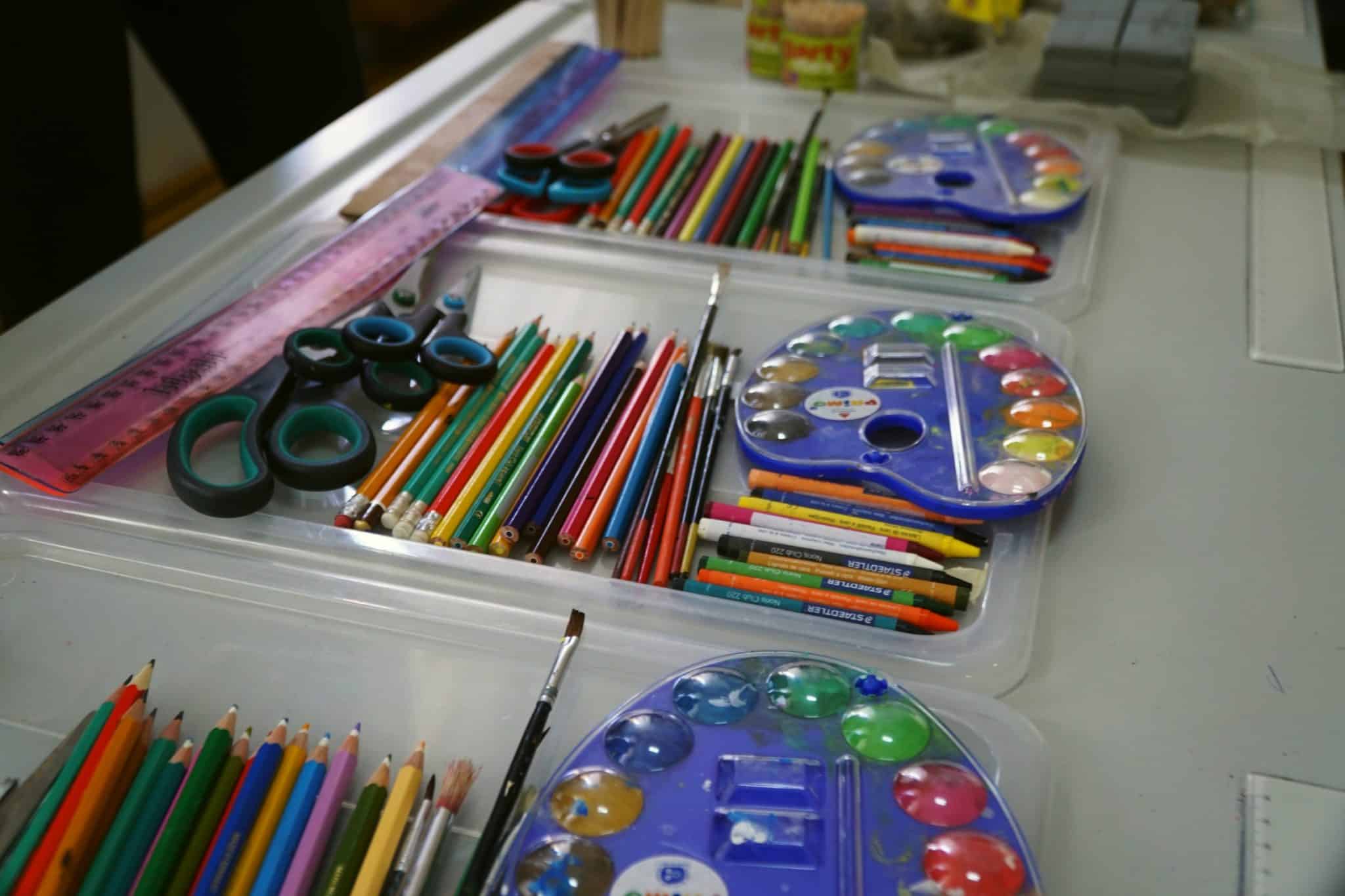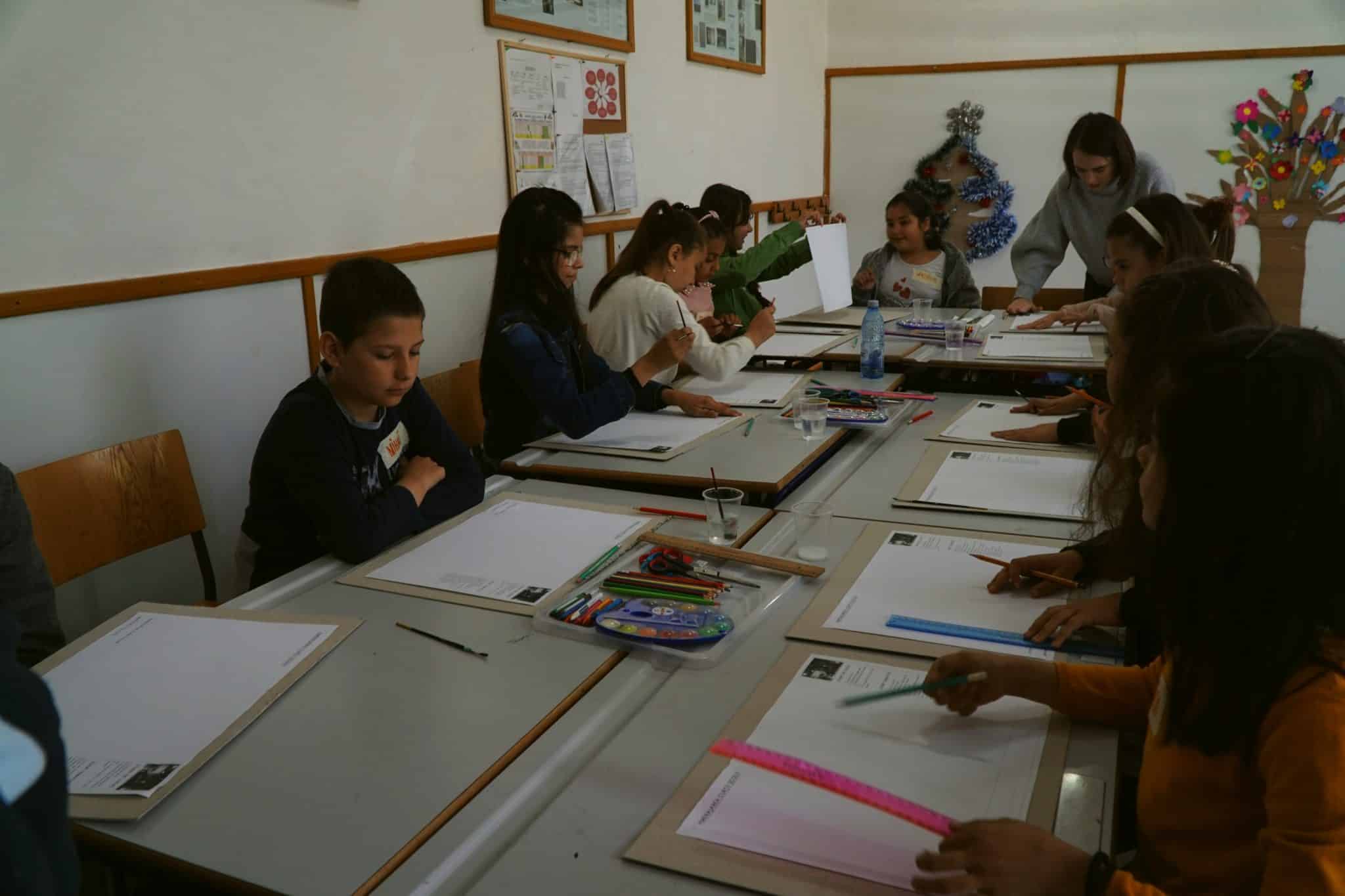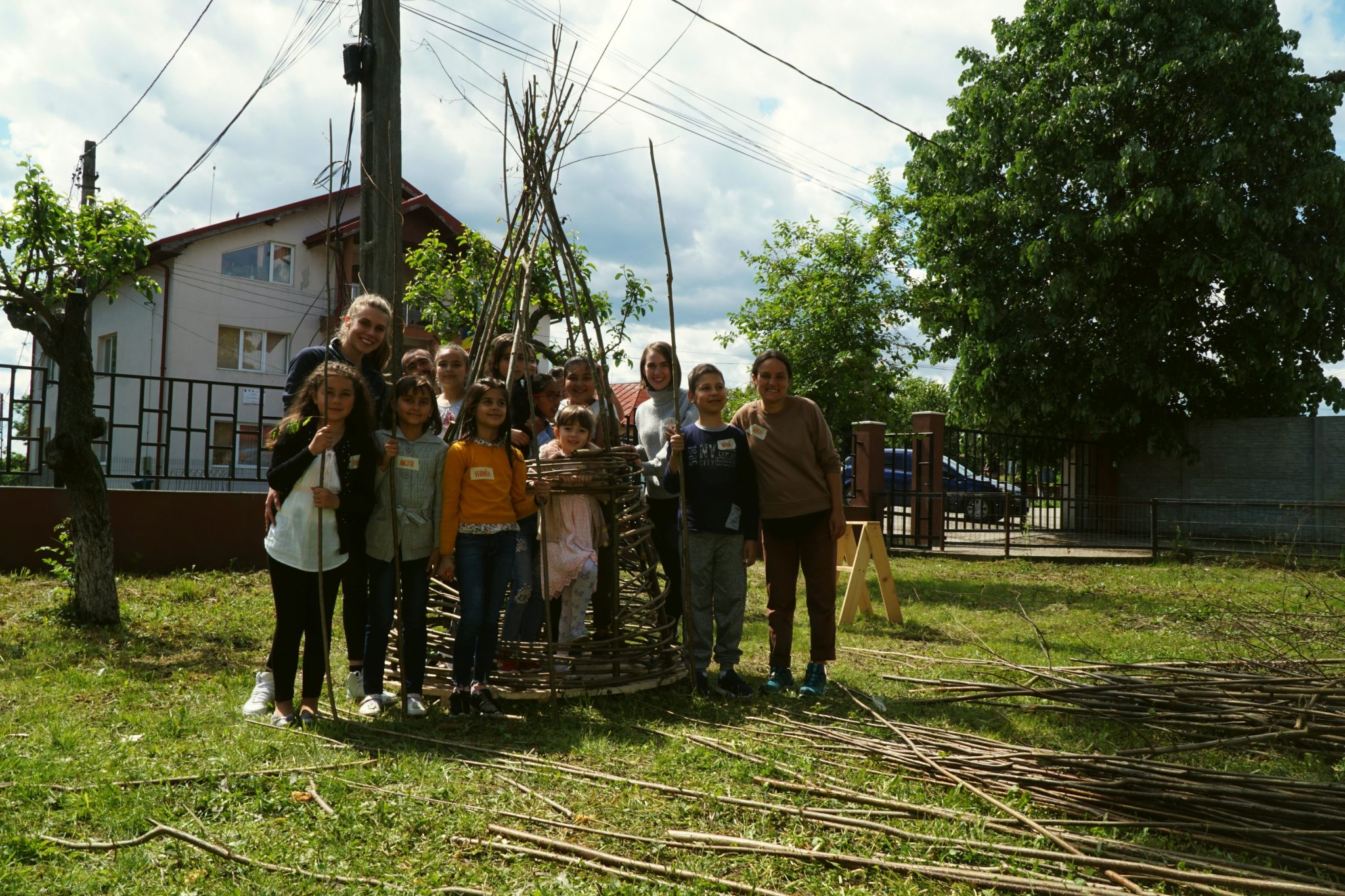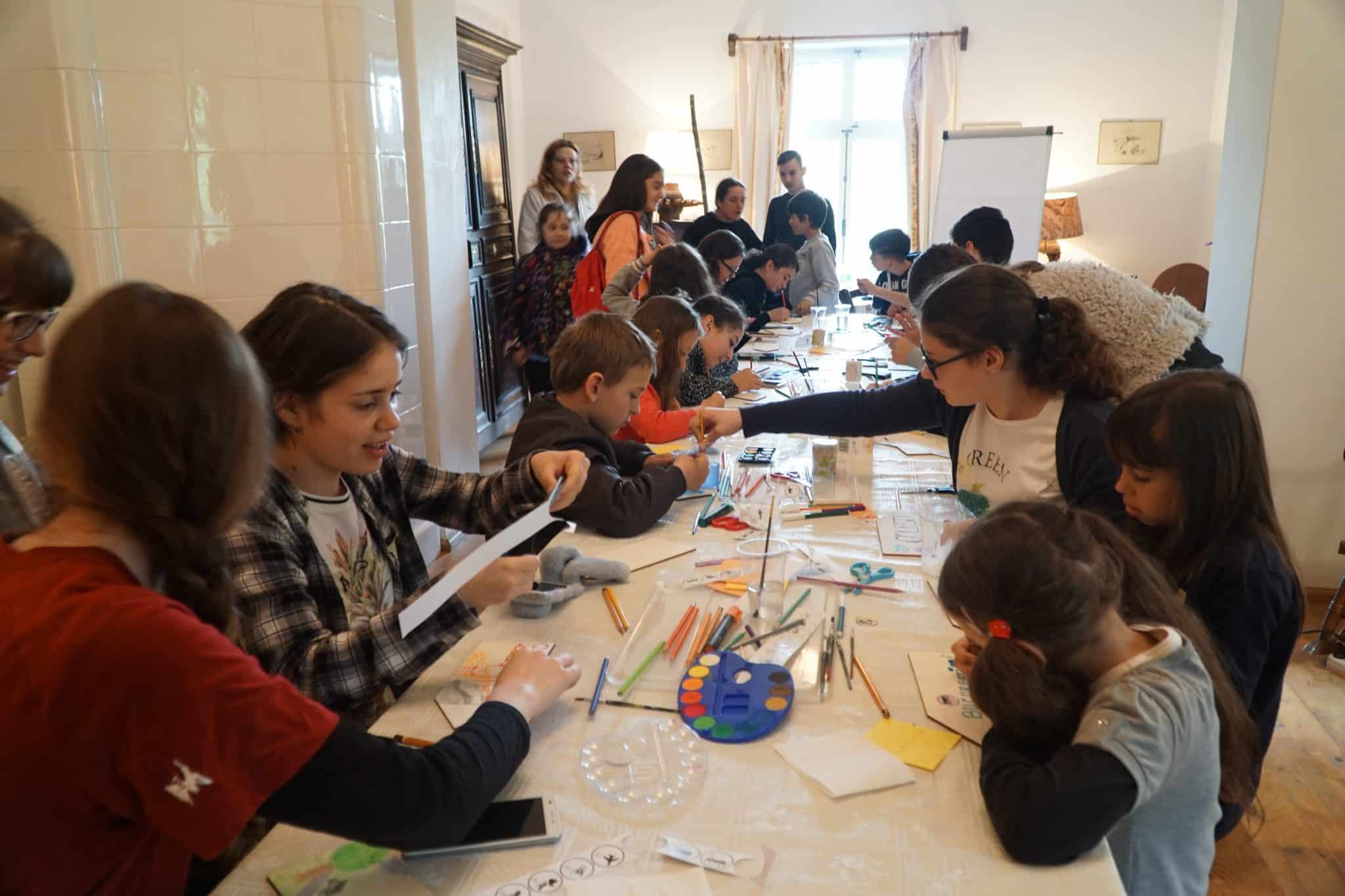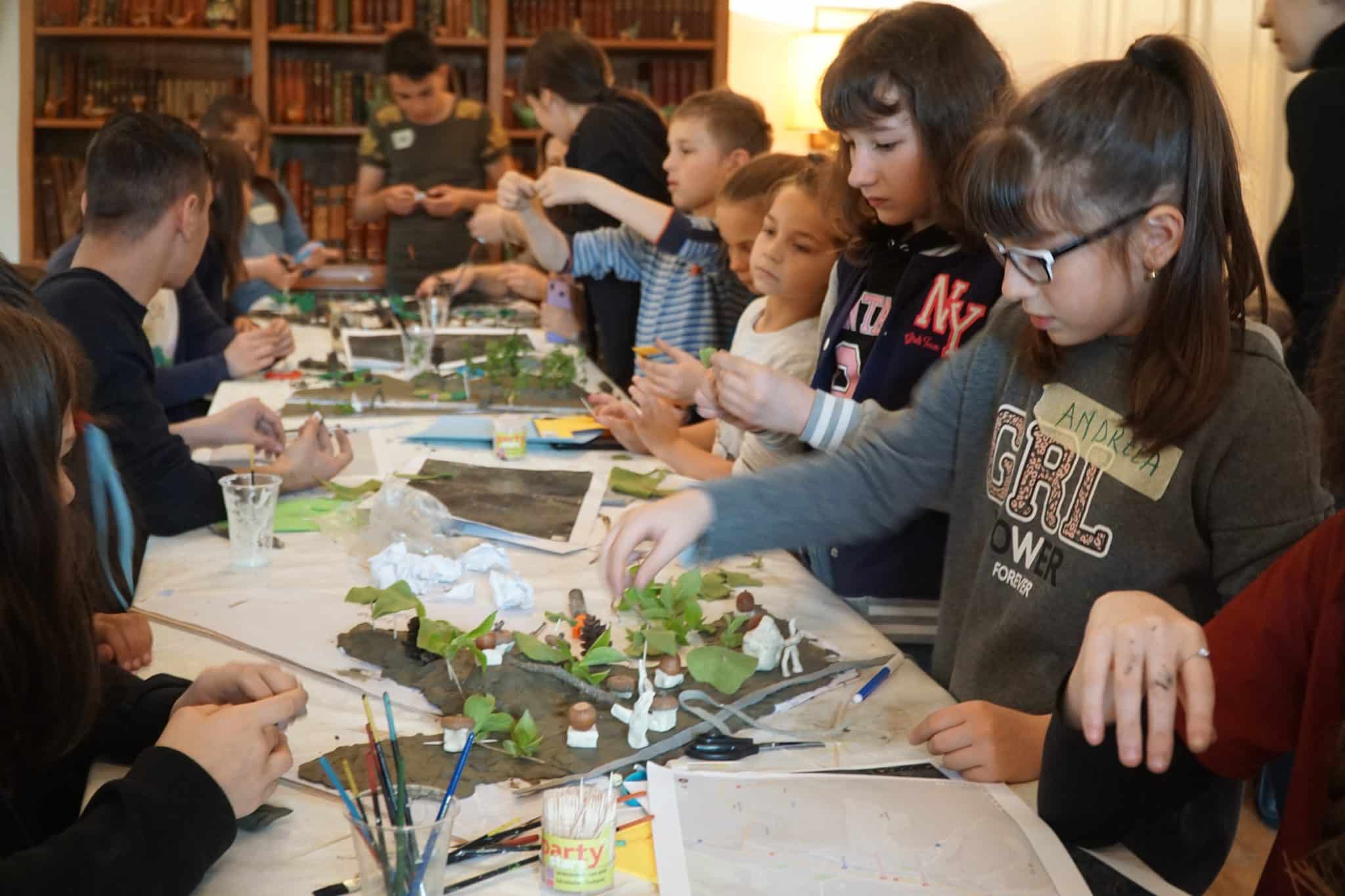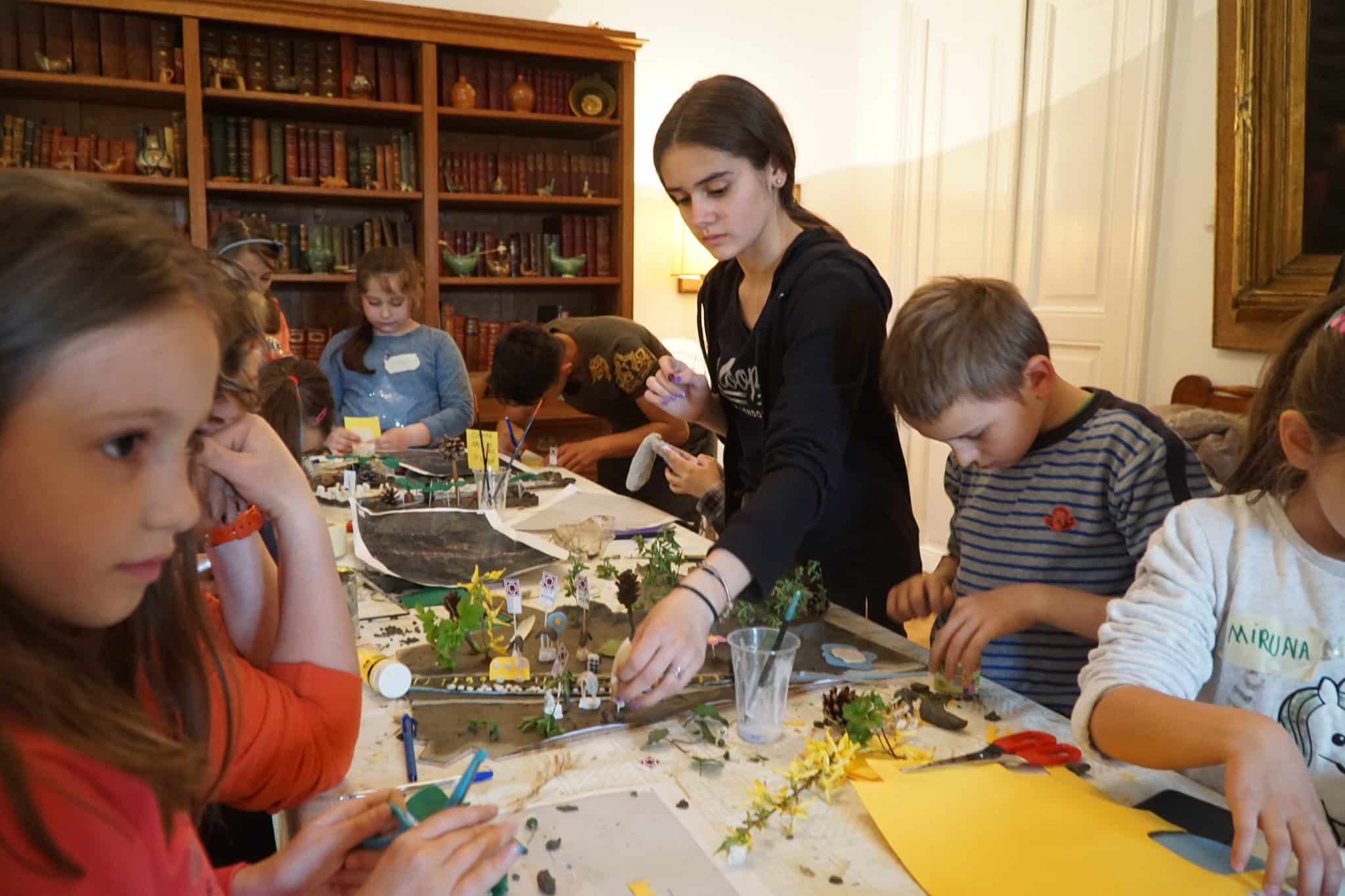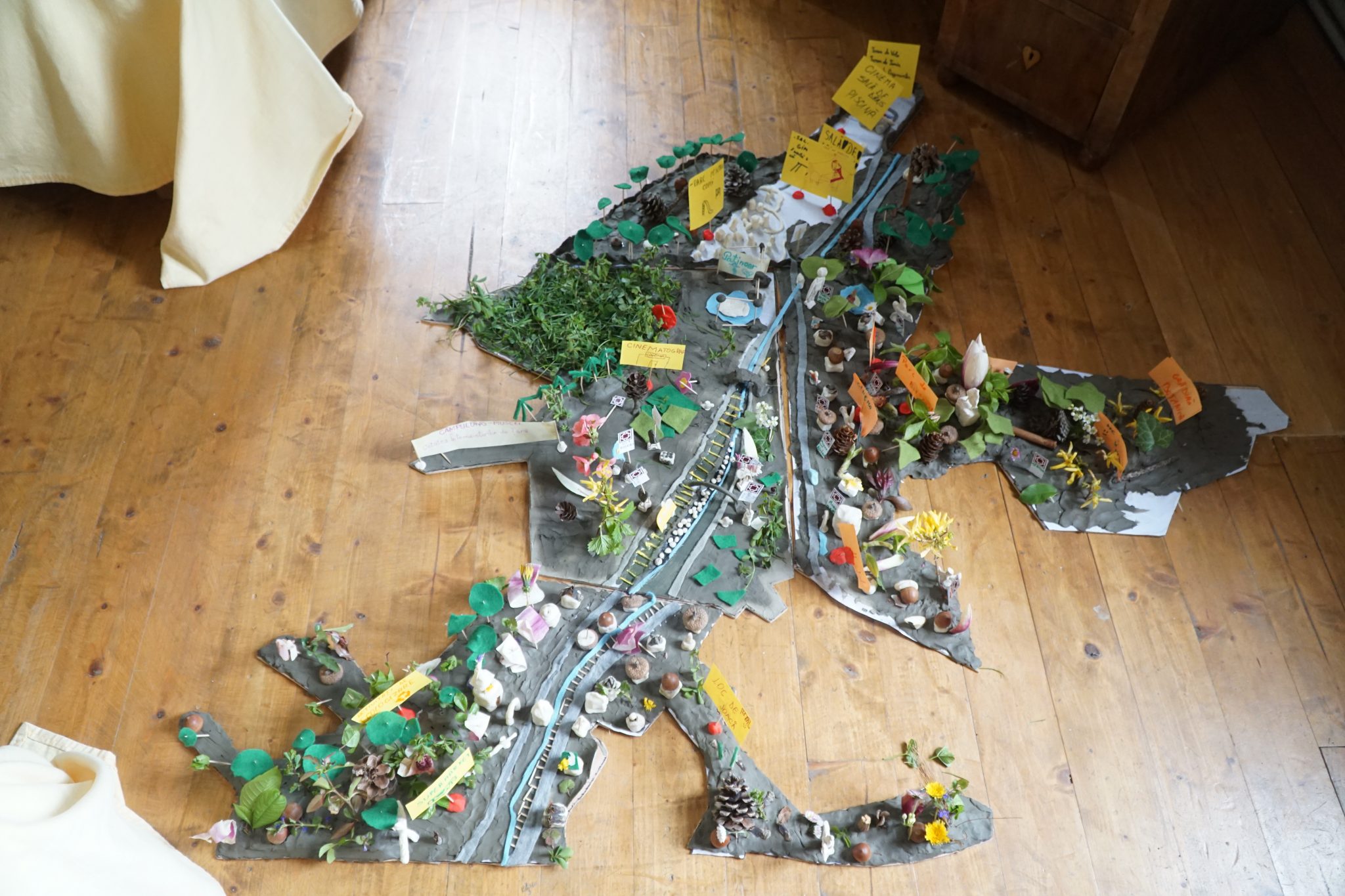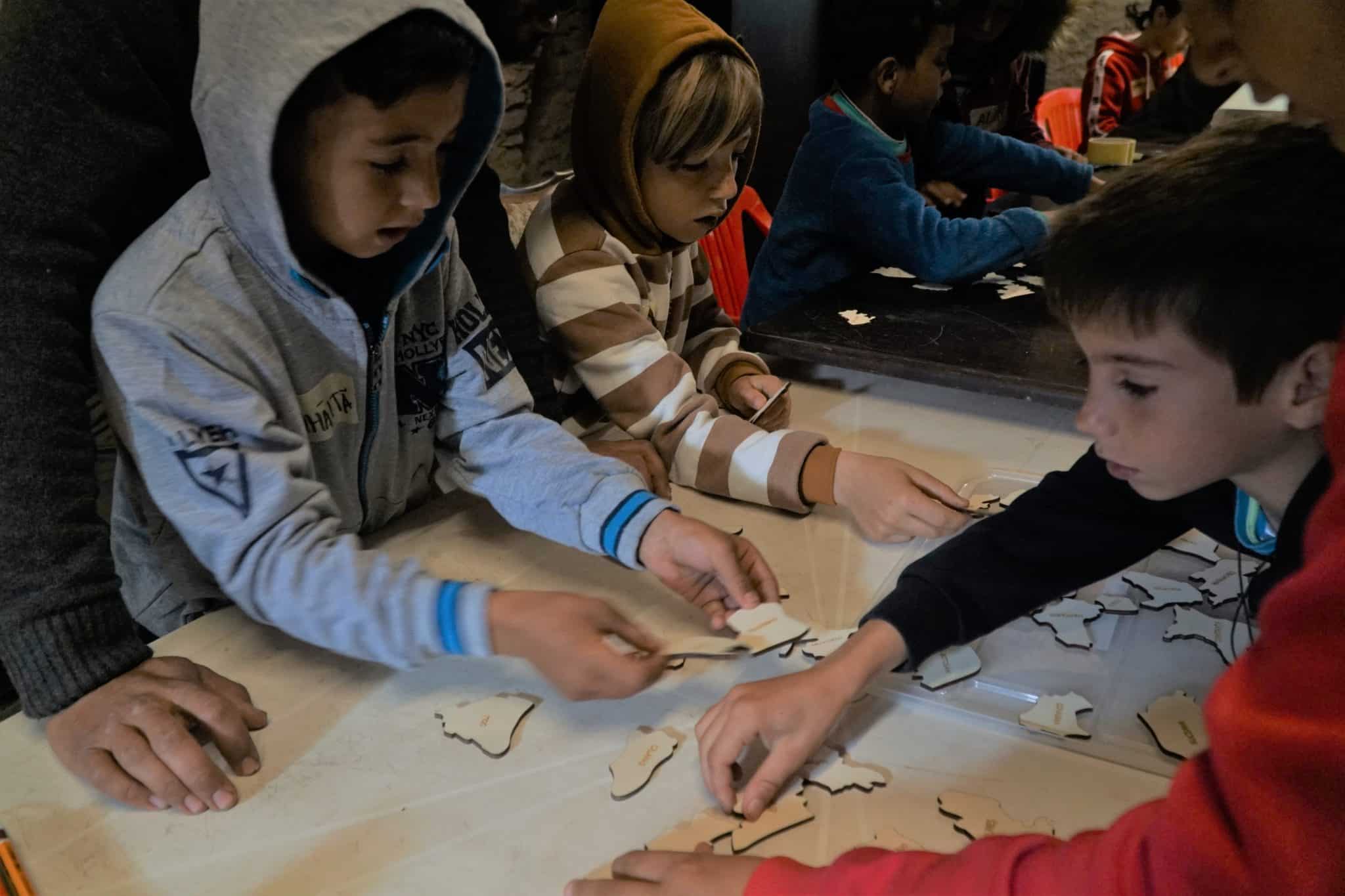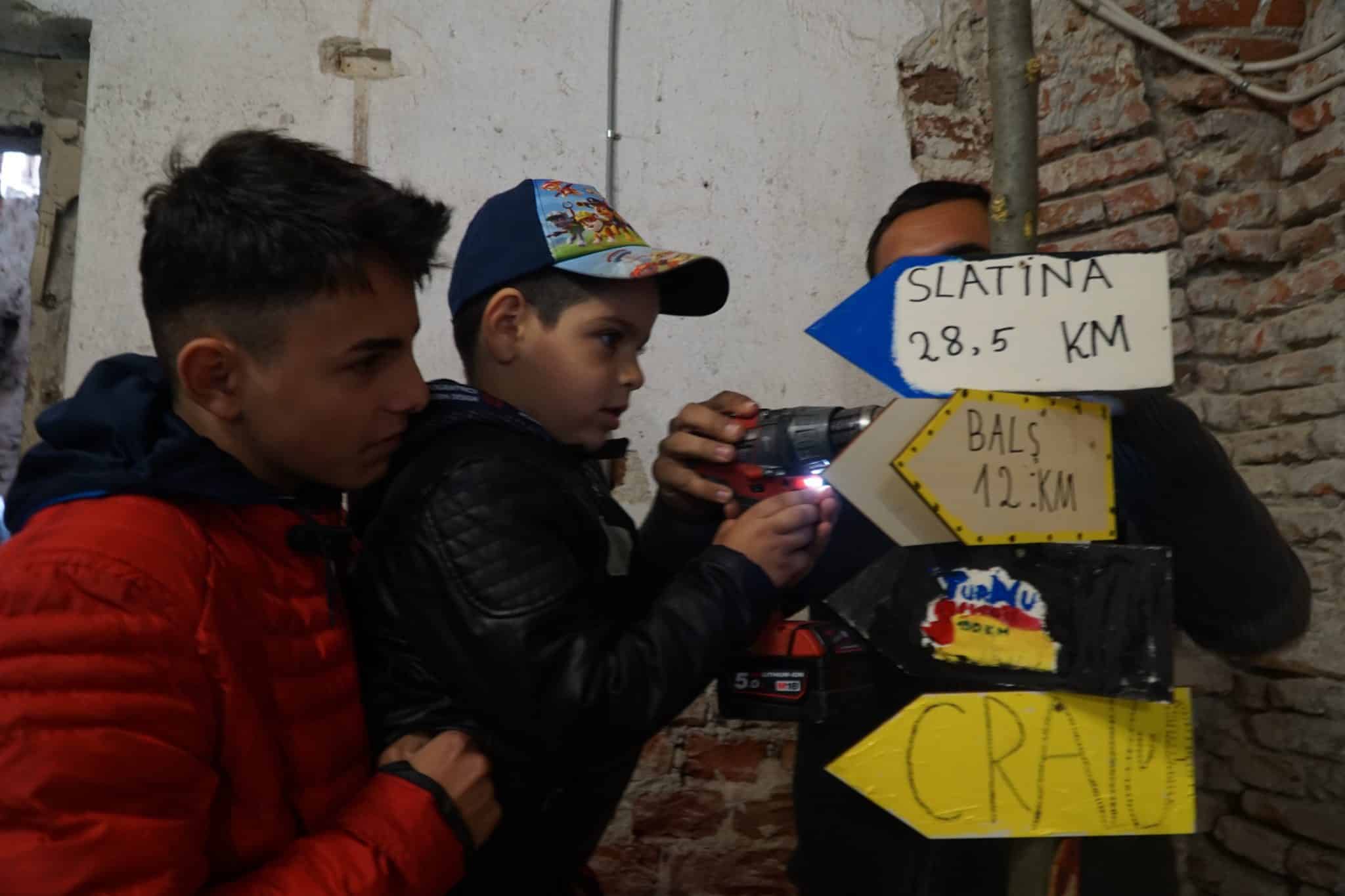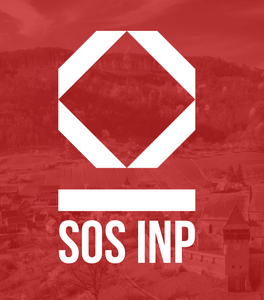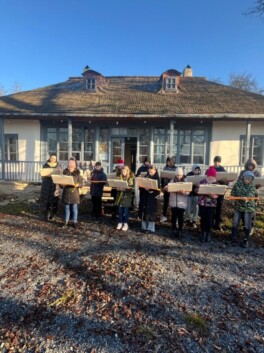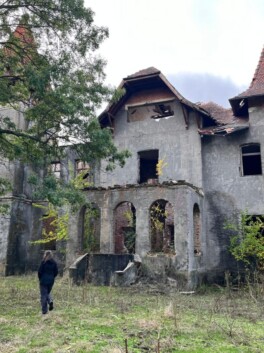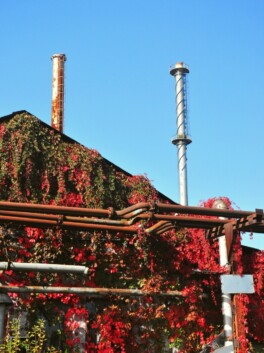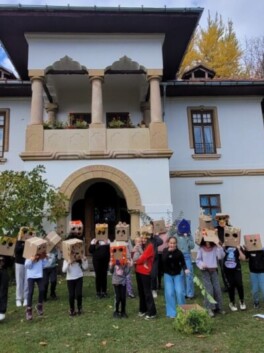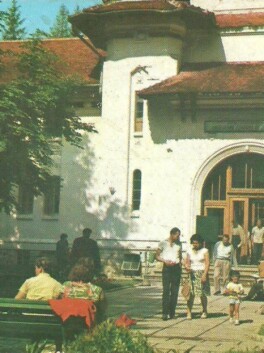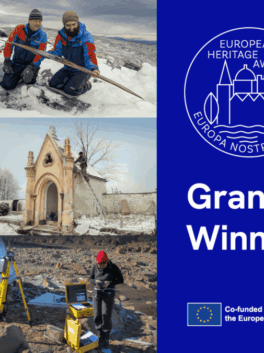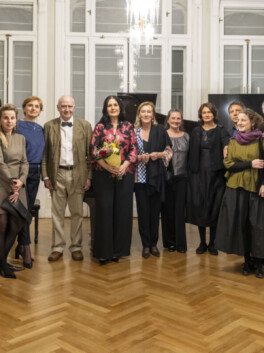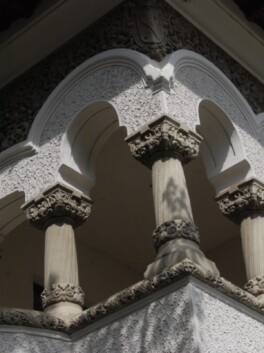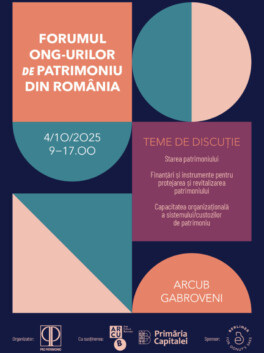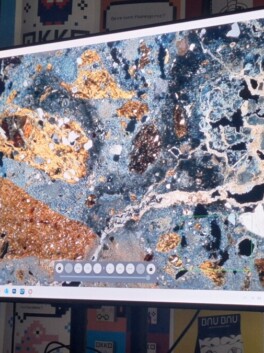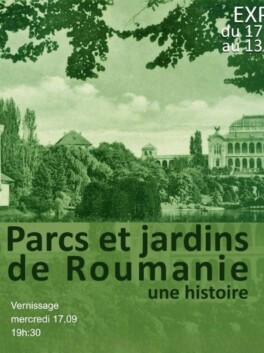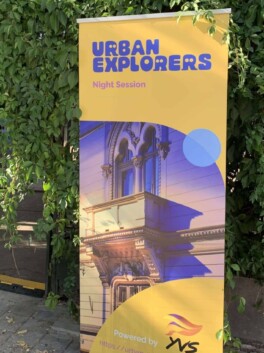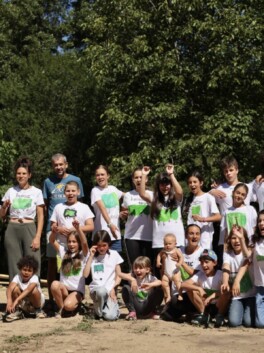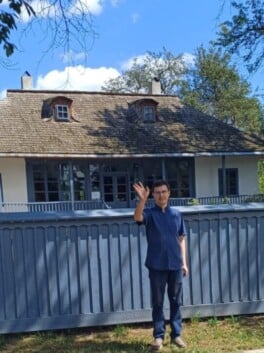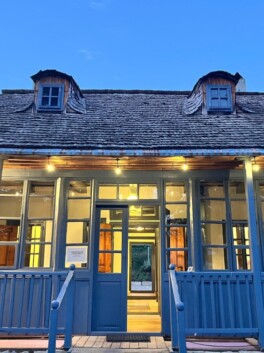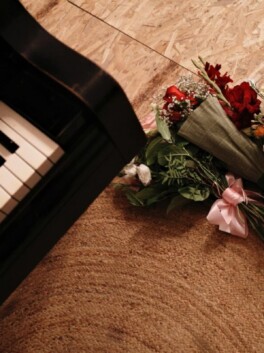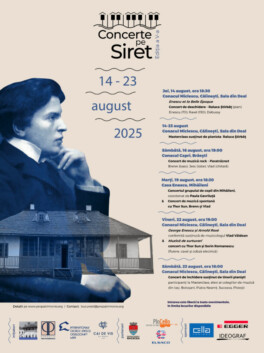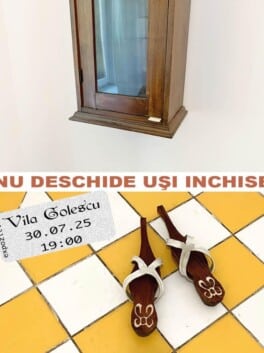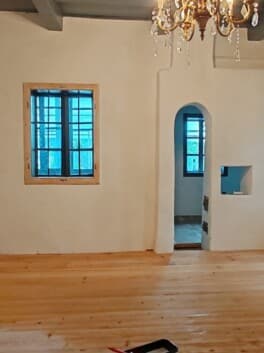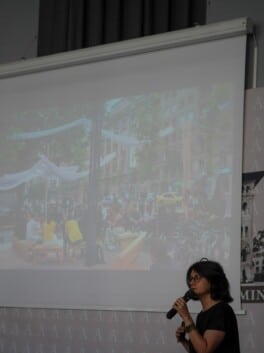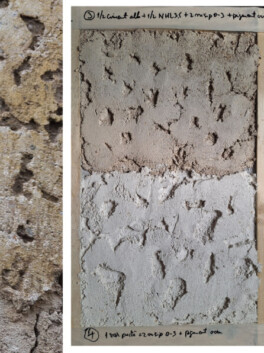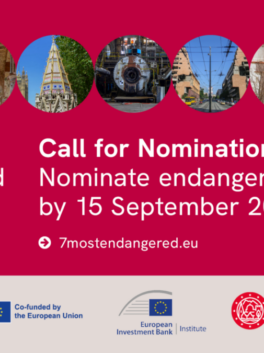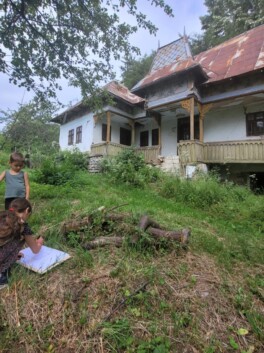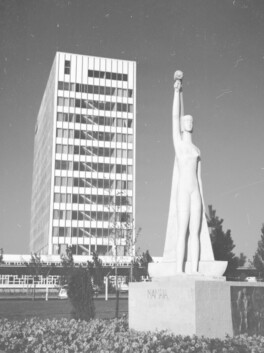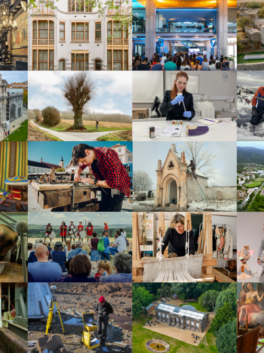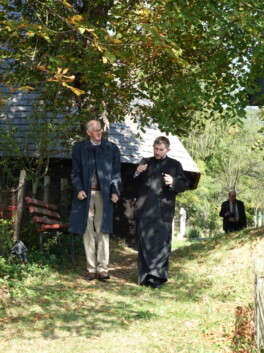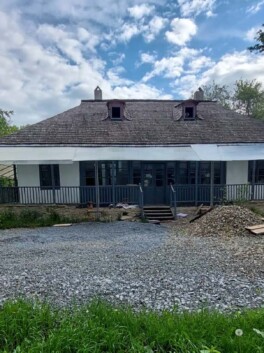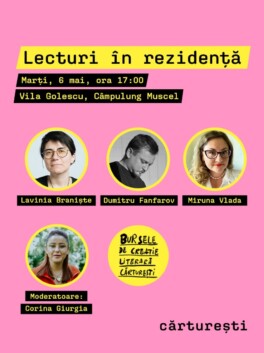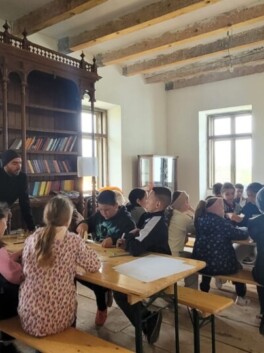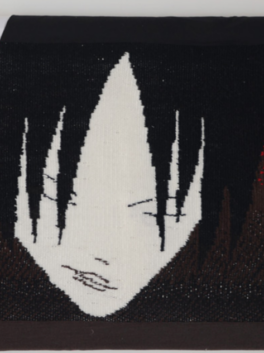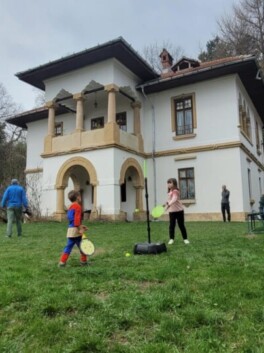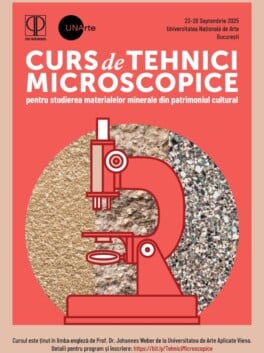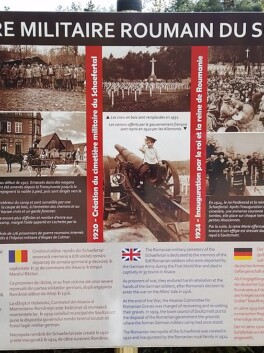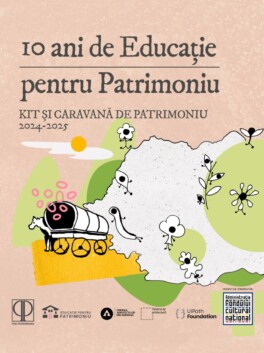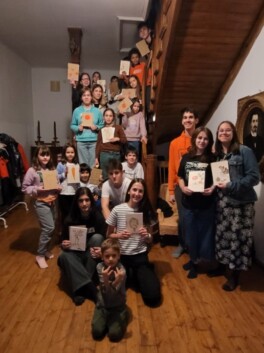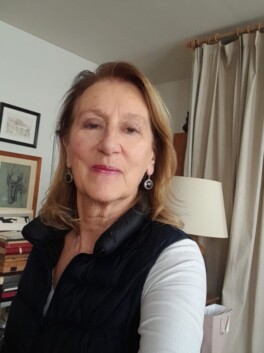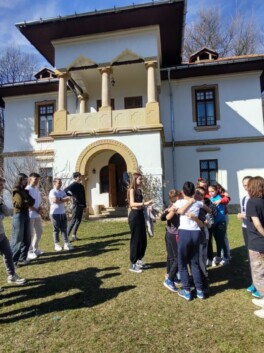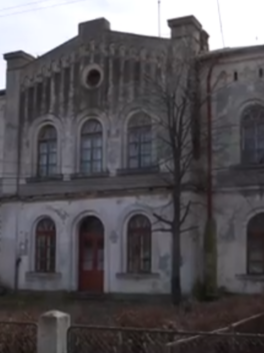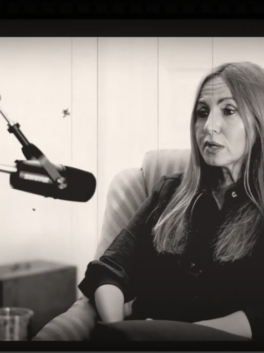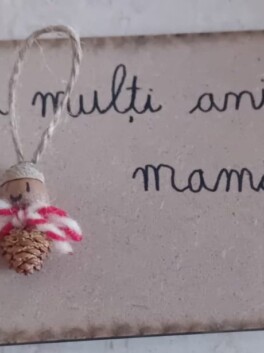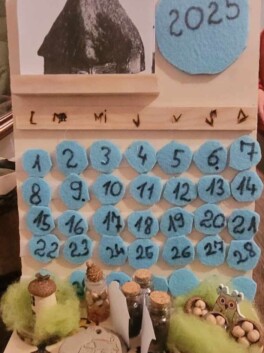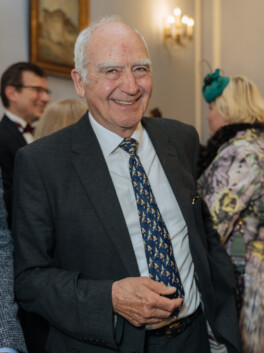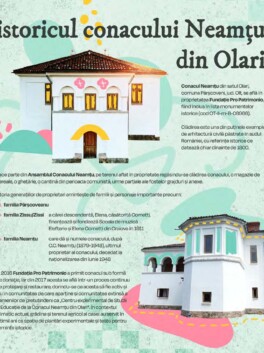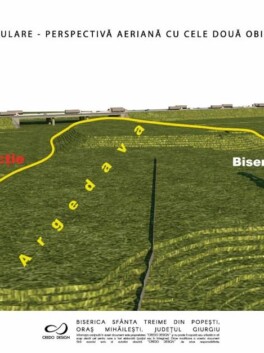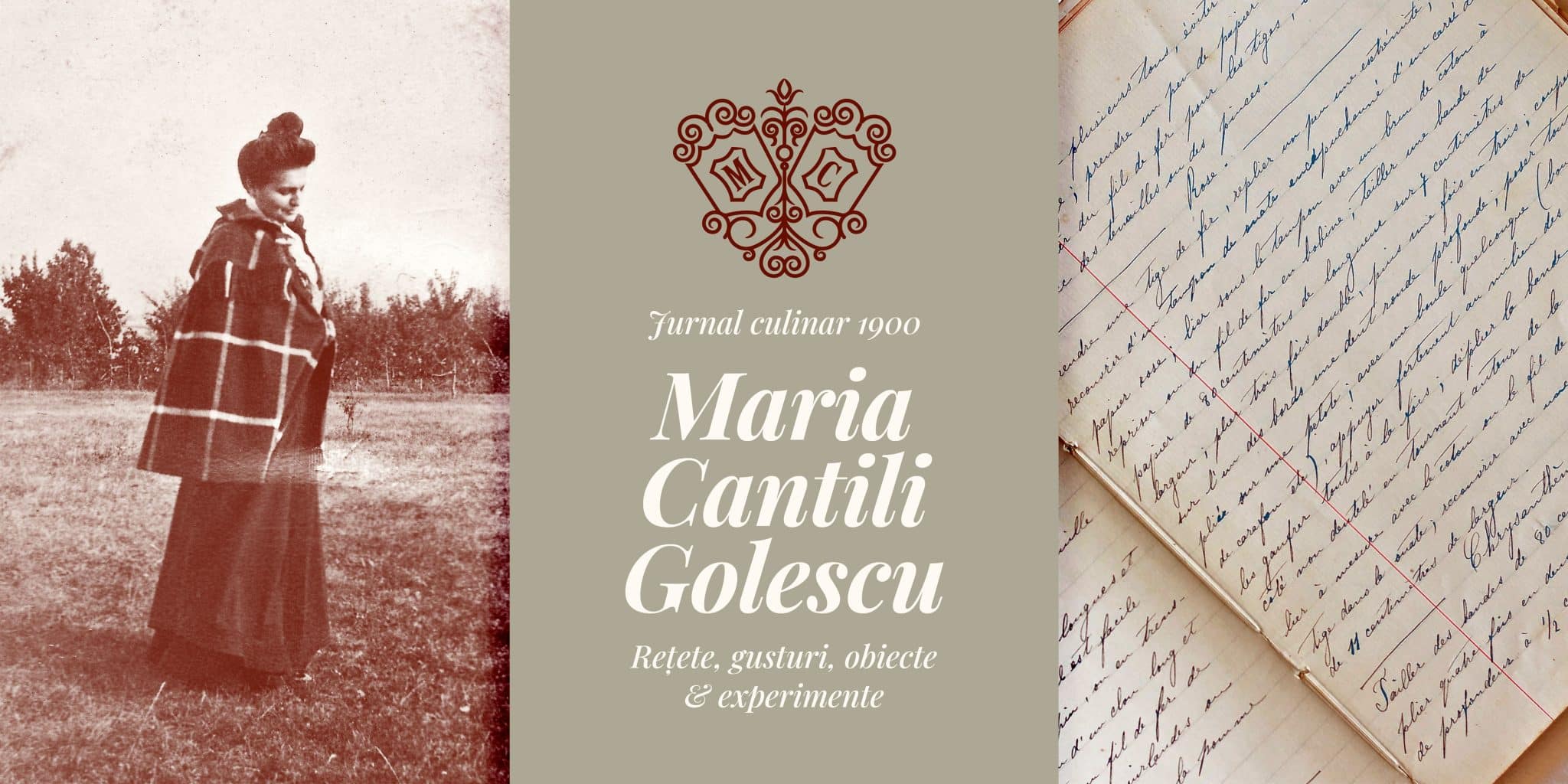
The Culinary Diary of Maria Cantili Golescu-recipes, tastes, objects and experiments
Inspired by a discovery that gave us no peace during the pandemic, we are launching a new cultural and creative project that will bring together translators and linguists, chefs and culinary experts, students and craftsmen, in a unique concept dedicated to the Golescu Villa.
In the Golescu family’s huge library, we discovered two recipe notebooks from around 1900 written by Maria Cantili Golescu, Vasile Golescu’s wife. An older notebook begun in Paris in January 1900 and completed in Bacău a year later. The second notebook was started 30 years later, in Câmpulung and finished there in 1935. The recipes are written in a time-specific script in French, Romanian, English and German. The notebooks offer a unique insight into the bourgeois and cosmopolitan lifestyle of the period, draw an imaginary map of the cultural influences from the region and from Europe, point out elements of the kitchen setting and utensils of the period, provide a picture of the foods and spices used at the time and present new curiosities about Maria Cantili Golescu, her family, the culinary objects of the period and the cultural landscape in which she lived.
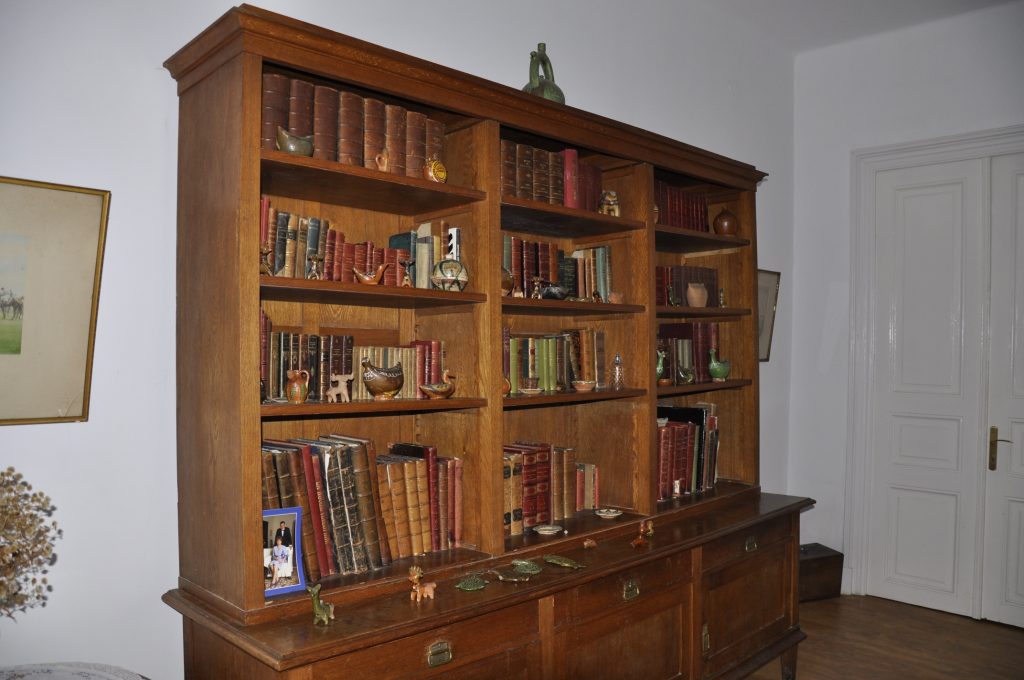
We want to document, structure and creatively enhance the archive of these recipe notebooks of Maria Cantili Golescu, as part of the intangible heritage belonging to the house and the city of Câmpulung Muscel. All the culinary resources thus discovered will be compiled in an online digital document, and some of them will be rewritten and creatively narrated with the help of 10 culinary experts in a recipe book, published both in print and online, accompanied by photo-video materials presenting and promoting each recipe.
The same culinary resources and items from Maria Cantili’s life will also form the basis of a new Honest Goods collection dedicated to these discoveries. Children and adults alike will experience recipes and their associated stories during the project through games, competitions, challenges and hands-on projects.
The project brings together specialists from various fields, enriching the experience in discovering the intangible culinary heritage of Villa Golescu with perspectives such as: the architecture and history of the place and of the Golescu family; the design of culinary objects from the past; the surrounding cultural landscape; local craftsmen and materials; contemporary design; the different methods and dynamics of contemporary and past cuisine; games and practical exercises from the educational sphere; the experience of the competition and the outdoor workshop.
“The Culinary Diary of Maria Cantili Golescu-recipes, tastes, objects and experiments” is a cultural project of Pro Patrimonio Foundation co-financed by AFCN.
Media partners: Scena 9, Rock FM, Muscel TV
Friend of the project: “Forgotten herbs” platform
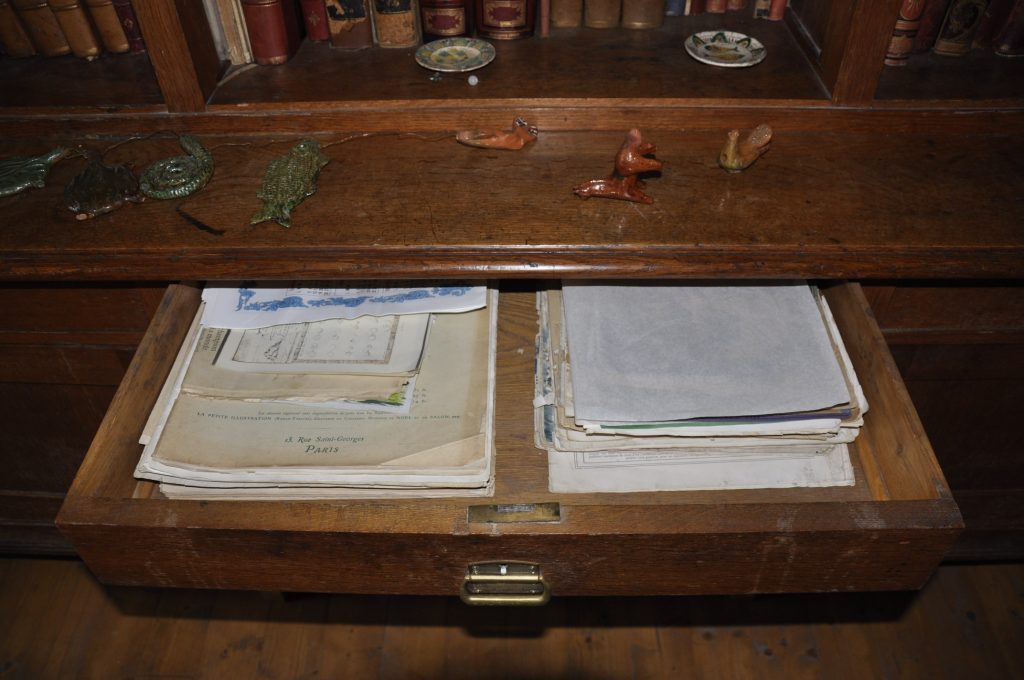
Stages
The research project has already started with the creation of a digital archive with all the recipes discovered, in raw format, easily accessible to all those interested, transcribed and translated.
The recipes thus discovered, in their original form, will be archived online in the form of a scanned digital notebook that can be freely accessed by anyone interested on the Pro Patrimonio website.
The recipes will then undergo a selection process with the help of guest culinary experts. Each of them will choose two recipes to explore and adapt and then present them as creatively as possible to their online audience. The selection of recipes will take into account both the preferences of the individual experts and the final content of the Recipe Notebook, which aims to document and bring to the public’s attention a collection of recipes that is as diverse and rich as possible in terms of both taste and the story that accompanies each tasteful memory. Participants will “translate” and transform the language of the notebook notes into recipes with marked ingredients and clear steps to follow for today’s user. The materials will ultimately form Maria Cantili Golescu’s Recipe Notebook, accessible in both print and digital formats.
In parallel with the adult specialists, 15 children will take part in the workshop held in summer at Golescu Villa and will produce their own rewritten Cantili Golescu recipe notebooks. The resulting children’s notebooks will be available in both physical format during the community celebration day and online on the foundation’s website. The children will also create an informal-playful map of the Golescu Villa with the dining places in the house and the old culinary objects to which they will link the documented recipes and their use.
The recipes selected for Maria Cantili Golescu’s Recipe Notebook will be related to the history of Maria Cantili and her relatives from the Golescu family and also documented from the point of view of their origin, their mixed influences (local or European), but also of the way they are served through an original proposal of kitchen objects inspired by them and designed for serving the dishes. The objects will be made in the spirit of the existing Honest Goods collection, using local materials and craftsmen, with projects prepared by two designers. The resulting objects will be featured on the dedicated Honest Goods objects page, each of which will contain the recipe of influence in the presentation.
Depending on the health-related context, the festive day in the community, planned for the autumn period, will host a culinary pickle-making workshop and a gastronomic contest with prizes dedicated to the people in the community — adults or children — who will propose to the participants to try some of Maria Cantili Golescu’s recipes.
Context
The history of the Golescu family is little known from the perspective of female characters, and Maria Cantili Golescu can be a starting point for exploring new characters, using objects, written memoirs, stories or other elements that are part of the discrete family history and the places where they lived. Maria Cantili Golescu’s personality is currently unknown, and the resources of the Golescu Villa offer the opportunity to explore it.
On the other hand, contemporary gastronomy today pays particular attention to reinterpreting recipes from the past and integrating them into menus. Plants used in the past and forgotten along the way are being rediscovered, and influences received over the years from neighbouring countries are being highlighted in the context of more complex cultural exchanges. In this context, the culinary research at Vila Golescu feeds an increased public appetite for such topics and encourages the creation of a more detailed future map of foreign influences received, integrated and reinterpreted in the community.
At the same time, Honest Goods is a collection of objects inspired by Villa Golescu and its surroundings, made with local resources, through the collaboration of local craftsmen and designers. The Honest Goods collection initiated in 2016 is a calling card and an invitation to the place from which it originates and contributes punctually to the maintenance and activation of the house. The special openness to the public shown since its launch until now through participation in national and international fairs and exhibitions and the actual demand for products and novelties, creates the basis for building a new series of objects. In the same spirit, but this time directly inspired by Maria Cantili Golescu’s recipes and linked to the serving of selected menus, the household objects will better highlight both the collection of studied recipes and the crafts and working techniques of the area in relation to contemporary, multidisciplinary approaches and visions.
The Foundation’s continued involvement among children groups in Câmpulung was what made our relationship with the community tighter and earned us the trust of both children and adults. From 2012 to date the Golescu Villa and Park have hosted a particularly diverse series of workshops, events and meetings including: A series of three landscape workshops related to exploring the natural and cultural landscape around Villa Golescu, as well as doing practical work in the garden, from 2012-2017; heritage workshops and multi-annual creative exercises for children from 2014-2018; textile restoration workshops from 2015-2016; culinary landscape workshop in 2016; making and maintaining the Honest Goods collection and the local craftsmen’s map from 2016 to date; the international festival “3 Doors, 3 Countries” in 2018; the “Heritage Education” project with specific workshops related to discovering certain heritage specialists: urban planner, architect, landscape architect, artist and craftsman in 2019; bi-annual workshops dedicated to young people in the community for the last 6 years.
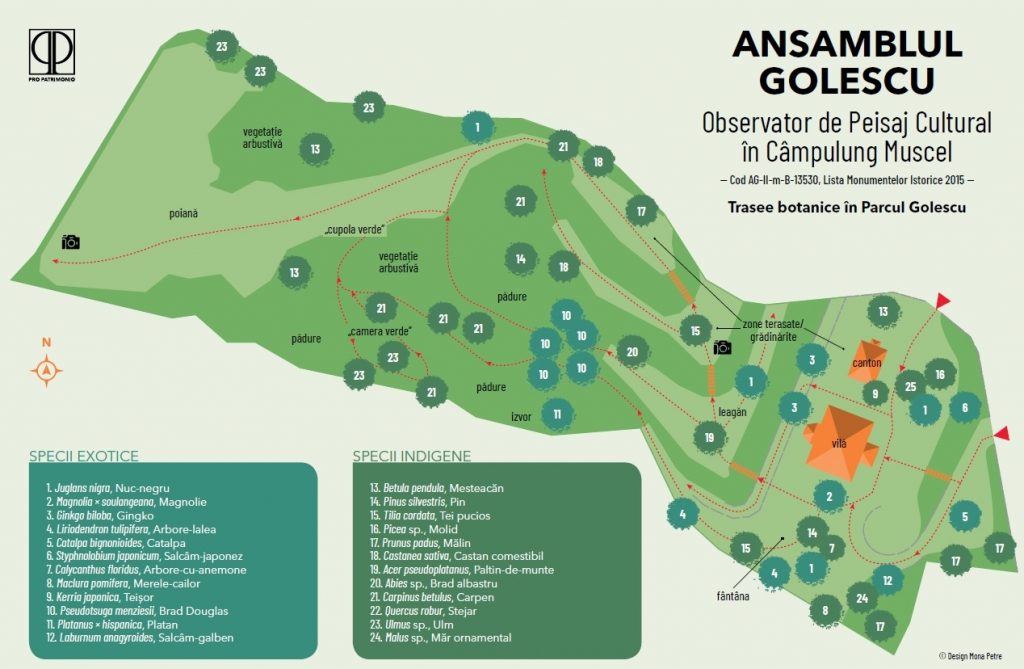
Heritage activities and workshops have thus become an almost indispensable component of any activity at Vila Golescu, an effective means of continuous development and diversification of the public, an opportunity to support the dialogue between children and craftsmen/specialists of all kinds, but also a sure, albeit always unique, way of enhancing the tangible and intangible heritage.
There are already a series of notebooks in the Golescu Villa collection that visitors can use to explore the local natural landscape through trails and local points of interest, the gastronomic landscape from the perspective of an experimental workshop with local elements and French influences, the intangible heritage through the collection of Honest Goods objects, using local craftsmen and materials.
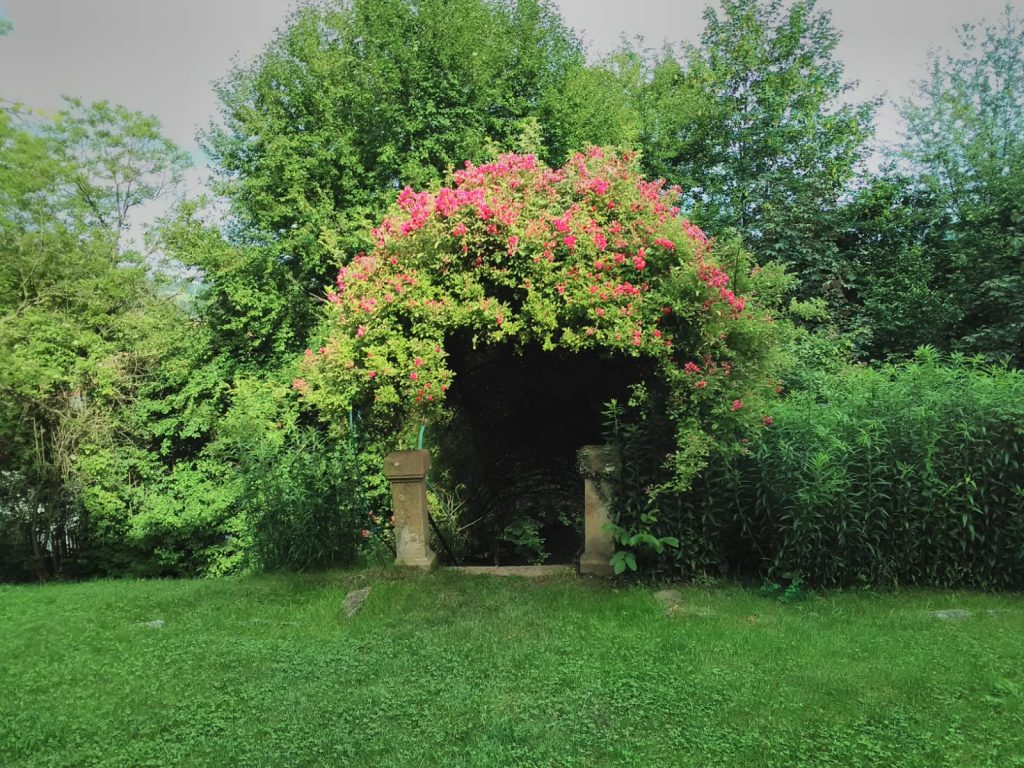
Thus, the Recipe Notebook complementing these proposals, invites an to a sensory exploration of the tastes discovered at the Golescu Villa and an identification of the local and European influences that shaped Maria Cantili Golescu’s life. It also provides an insight into the context of the Golescu family at the time and invites to creating a link between taste, history and utility through the old objects in the house and newly created objects designed to support the culinary act. The alternative discovery map of the house offers the prospect of a playful tour through which the visitor associates places and objects in the villa with the culinary moments of Maria Cantili’s time.
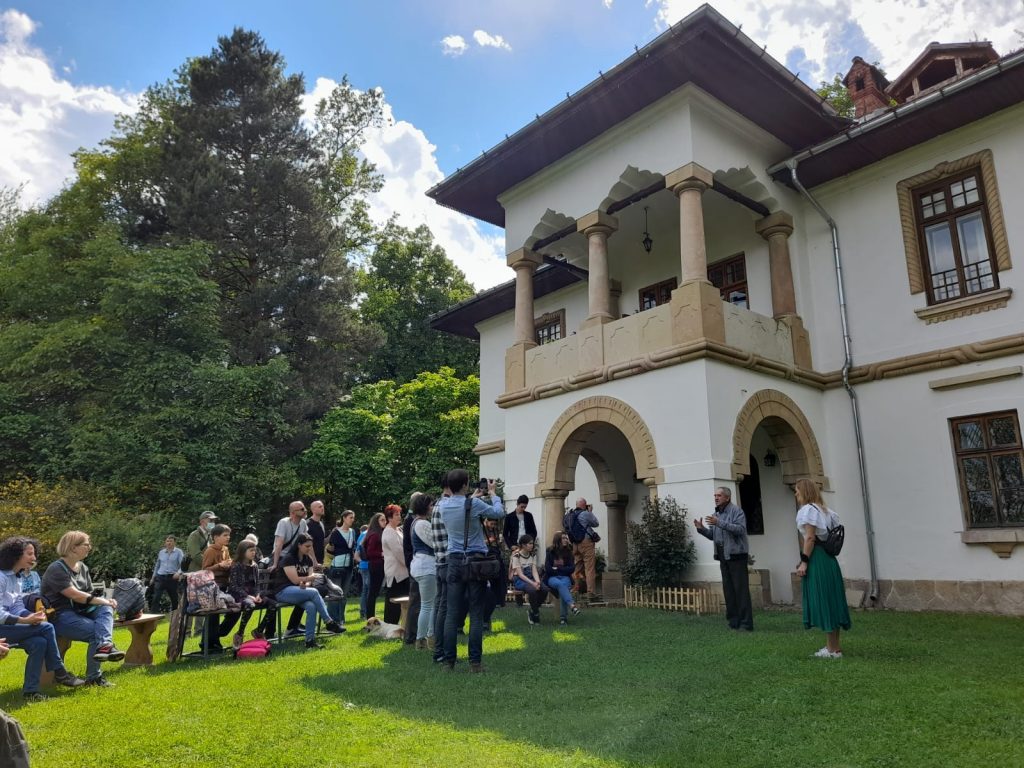
*
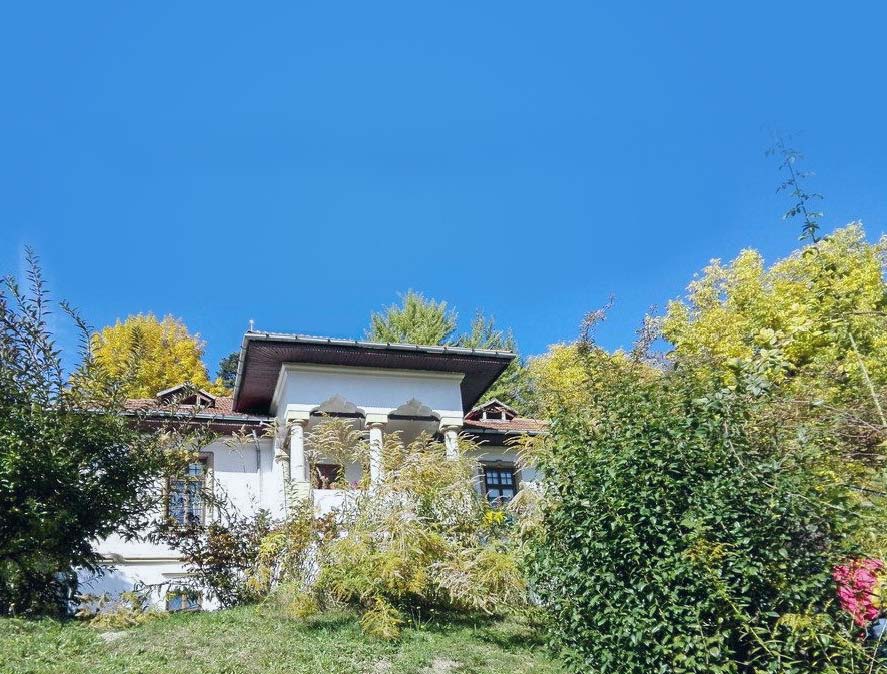
Creative Residency Accelerator
Concept
Continuing its strategy of seeking models and solutions for cultural heritage, especially in the field of architecture, as a socio-economic and environmental resource, Pro Patrimonio Foundation proposes a productive model of cultural and entrepreneurial development through the Creative Residency Accelerator programme. Fostering creation and cultural education, access to knowledge production, encouraging artistic experimentation and entrepreneurial initiatives are this programme’s key directions.
In this way, we bring together European guidelines for action to challenge sustainable development for future generations. Architectural heritage becomes, in partnership with the business environment, an accelerating vehicle for culture as a collective resource.
We start by introducing the first project of the programme: the creative residencies for culture and environment hosted by the Golescu Ensemble (Villa and Dendrological Park) – Cultural Landscape Observatory in Câmpulung Muscel.
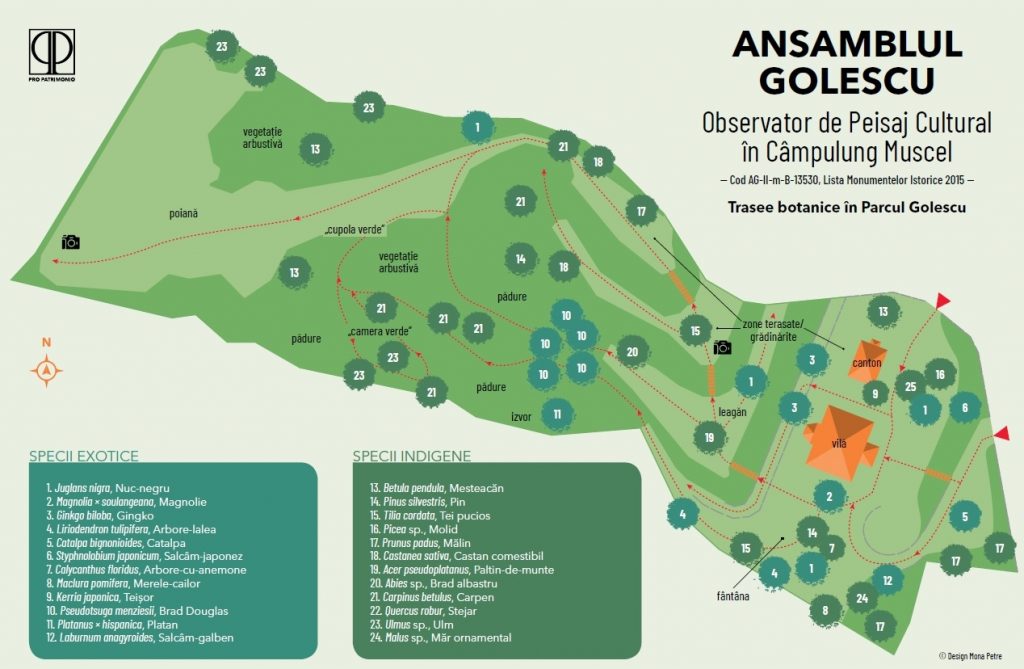
What is a creative residency
A creative residency is a temporary period during which an artist/creator/author/professional working in the fields of interest is engaged in creating/experimenting and developing a specific project, with logistical support (accommodation, grant and specific materials to carry out the project) for a fixed period of time.
The person selected to carry out the residency at the Golescu Villa in Câmpulung Muscel will live there for one month to carry out the project selected by a jury. During the residency, participants are encouraged to present at least one public event for the local community and the general public.
How residents are selected
There will be a public call for applications for residency projects for a specific area and period of time, based on a set of rules of participation that is developed by the Foundation. The call is announced through the Foundation’s channels and those of its media partners.
Pro Patrimonio specialists and invited guests with relevant experience in the field will select the shortlist of projects for residency, which will be posted on the Foundation’s website and presented to the general public. The jury will then select 2 finalists from the shortlist who will carry out their projects within the Golescu residency.
The residents will be able to benefit from guidance and counselling during the development of the project from Pro Patrimonio specialists and the invited jury.
Each residency will be implemented depending on the identification of funding sources, sponsors or donors directly involved.
Fields for residencies
- Design, technology and/or crafts
- Literature/poetry
- Landscape/ ecology
- Environmental journalism
- Dance/ Choreography and body performances
- Visual arts/ artistic research
- Music
- Architecture
- Experimental film
- Entrepreneurship for creative industries
- Civic education
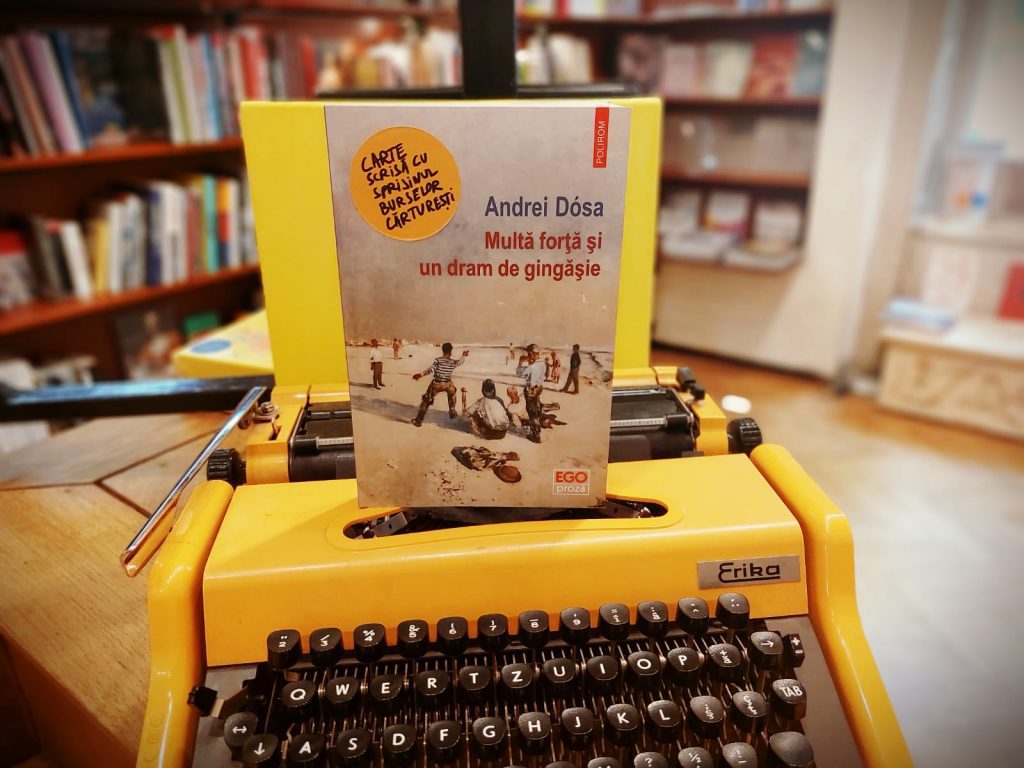
REZIDENŢE GOLESCU: Al doilea an al Burselor Cărtureşti

“Workshop 5: Community Festivities”, July 16-21, 2019
We dedicated the period between July 16-21 to community festivities. The workshops and the enthusiasm over the year were gathered in a two-day festival in each of the three communities around the heritage buildings in Izvoru, Olari and Câmpulung Muscel. The activities and challenges of all the workshops were recalled in an exhibition, celebrated festively and even supplemented with some new challenges.
The two-day program in each community included, with the corresponding customizations, the following activities:
1. The craft marathon with four work benches that creatively and usefully explored the manors’ world of interior decorations.
• Linocut engraving workshop – started from the story of the wallpaper decorated walls decorated and invited the children to create similar patterns using the technique of linocut and, in the end, printing them on satchels to be worn.
• The stucco workshop – after exploring the interiors decorated with different models of stuccoes, the children made their own decorative shapes from plaster and moulds ;finally, they prepared personalized protection bags with rich plants, whose colour and texture were fixed with Iron sulphate.
• The mosaic workshop – starting from various classical models of portrait-medallions, the children created their own medallions using unusual pieces of mosaic: painted beans
• The paper workshop – the walls can be decorated even with manual paper, which is why we did not hesitate to create our own models of recycled manual paper with decorations from the surrounding world of plants.
2. The animation-film workshop emphasised the local specific, the stories or places representative for each community, depending on the specificity of the place. The communities around Perticari-Davila Manor and Neamțu Manor benefited from the guidance of the animation specialist Andra Berilă to create two animations with the stories of the place. Original, friendly and not overworked, the animations followed almost all the stages of the specialist: identifying the story, structuring it into frames, making backgrounds, characters and component elements, preparing and frame-filming.
The community of Vila Golescu had already enjoyed a take on how to make an animation last year, and this year, together with the specialist Alin Iacob, they even managed to make a short film of a personal presentation of the Golescu villa and garden, which took the small filmmakers through very real stages of design and production: technical familiarity with the camera, the choice and argumentation of the frames to be filmed, deciding on lines, the framing and filming itself, voice recording and then editing in a specific program.
3. Photo exhibition with very diverse stances of the three workshop-destinations that brought together for all communities the overall image of the Foundation’s initiatives at all three mansions.
4. A gastronomic contest addressed firstly to the mothers of the children, but equally to any interested member of the community, after which, through multiple tastings and sincere votes, the winners left home with a household item: a mixer. Salted cakes and dishes far exceeded our expectations, encouraging us to believe that this initiative could grow in the future by supporting the educational activities at the mansions in a pleasant and tasty way.
5. Film projection in the manors’ yard, in the company of the nice animated feature film ODDSOCKEATERS, broadcast in partnership with FREEALIZE.
6. Evening out in the open air, as is suitable for the end of a camp, in the courtyard of the three manors, where the brave and the curious alike not only learned to set up tents, but also used them to spend the night with the camp team. For most of the children, sleeping in the tent was an unforgettable experience, which proved to be the culmination of the small festival-workshop and which often gave rise to the question and challenge: “when will you organize a camp at the manors? .
The activities followed one another with applause, running, exploring places, picnics, snacks, happy visits from parents and teachers, lots of enthusiasm and exciting requests to repeat the experience from children and the community alike.
We enjoyed the support of the close members of the community, the help of parents, teachers and especially volunteers, Luiza Anna and Ana Maria Apostoiu, we enjoyed the culinary gifts received to complete the atmosphere, but most of all the confidence and enthusiasm received from the part of the children to continue our educational efforts, after this year, with even more expectations.
We are going to gather the experiences gained this year in an online educational guide, which we hope to be of help to with initiative and even launch a small series of educational objects and games that will tell and support in the future a part of the foundation’s activities.
Cultural project co-financed by AFCN. The project does not necessarily represent the position of the Administration of the National Cultural Fund. AFCN is not responsible for the content of the project or how the results of the project can be used. These are entirely the responsibility of the beneficiary of the financing.
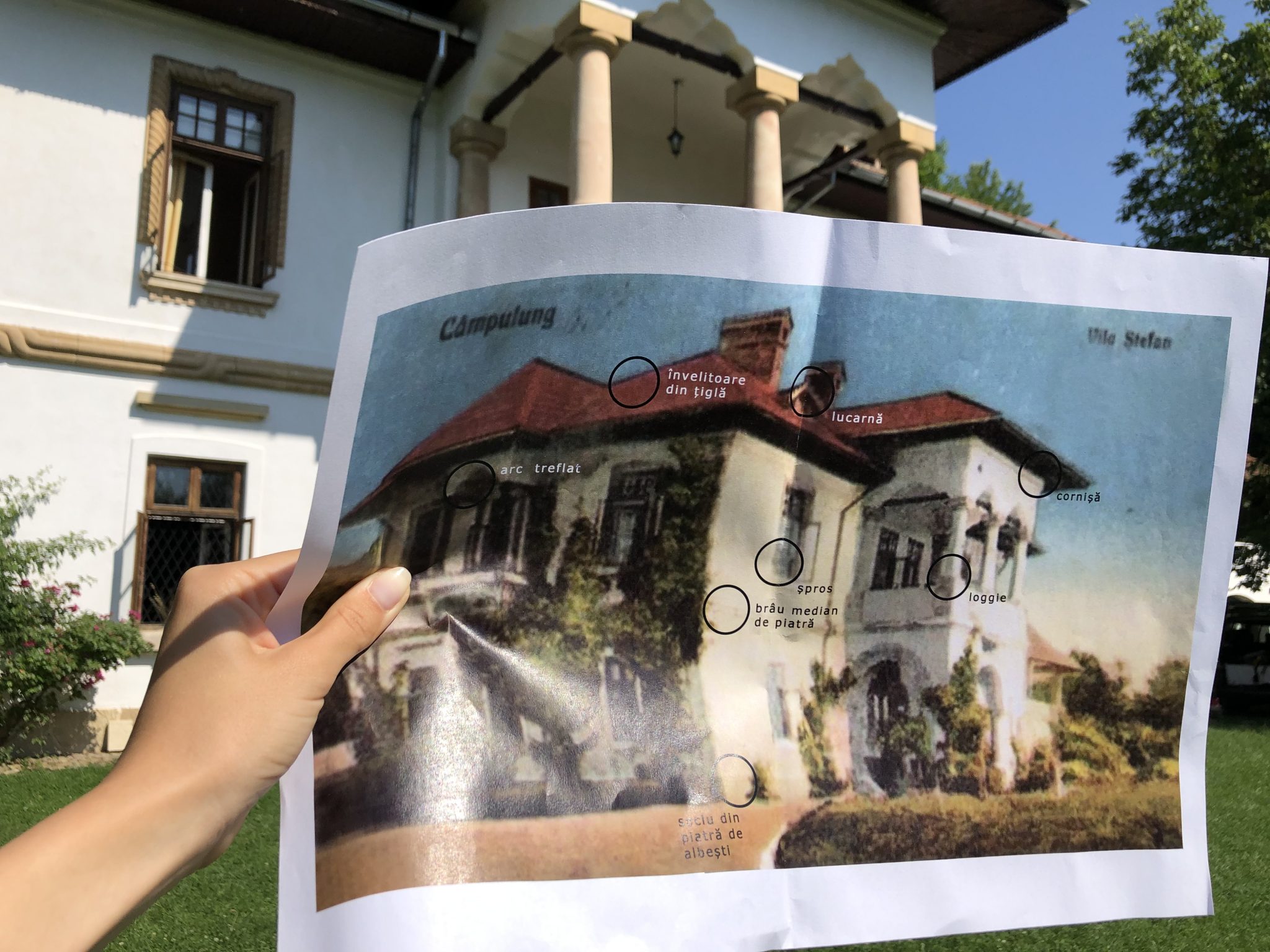
“Workshop 4: Treasure Hunt,” May 29 – June 2, 2019
On the first holiday weekend, June 14-16, we started the workshop caravan at the three mansions. This time, our activities moved out in the open to enjoy the warm days of this season.
We set out to discover the hidden histories of the mansions through a timed treasure-hunt game, with as diverse and dynamic ostacles as possible, be they sports, cultural, creative or DIY.
The competition unexpectedly motivated all members of the children’s teams, their captains, supporting teachers and parents in the gallery. In order to get the clues needed to draw the whole story, the children had to get past:
1. the sports challenge – running, pushing logs or pulling straw bales, balancing on an “electric wire”, walking like a dwarf and finally, recovering a written message from a tree;
2. archery challenge;
3. speed drawing challenge – a relay race with pencil and sharp attention whose theme was the manor’s main facade in as much detail as possible;
4. the challenge to measure the height and the width of the manor by estimating with landmarks and by orientation, which implied localizing the manor according to the cardinal points;
5. identification of plants according to their place on the manor’s garden map;
6. the challenge to make a poster that promotes the manor together with a representative plant;
7. the challenge of architectural details – correlation of specialized terms that describe constructive elements of the manors with their place in the vintage photo of the three constructions;
8. the funny challenge, with two coordination challenges for the teams to obtain the desired clue in a unique way;
9. the creative challenge that starting from a short story involved making a famous character from the manor using materials such as wood, thread, vegetation and textiles.
All three communities managed to reconstruct the stories from the mansion exploring them in a fun way, got closer to the famous characters who animated the manors in the past, such as Elena Perticari-Davila, George Zissi – “Prince of Olari” – and Vasile Golescu, strengthened friendships as a team and offered us the opportunity to enjoy not only the experience of working together, but also the enthusiasm and emotional requests to continue the activities of the manor in the future. We celebrated the end of the adventures with the DIY of souvenir diplomas with perforated manor facades and the stories won as a decoration.
Cultural project co-financed by AFCN. The project does not necessarily represent the position of the Administration of the National Cultural Fund. AFCN is not responsible for the content of the project or how the results of the project can be used. These are entirely the responsibility of the beneficiary of the financing.
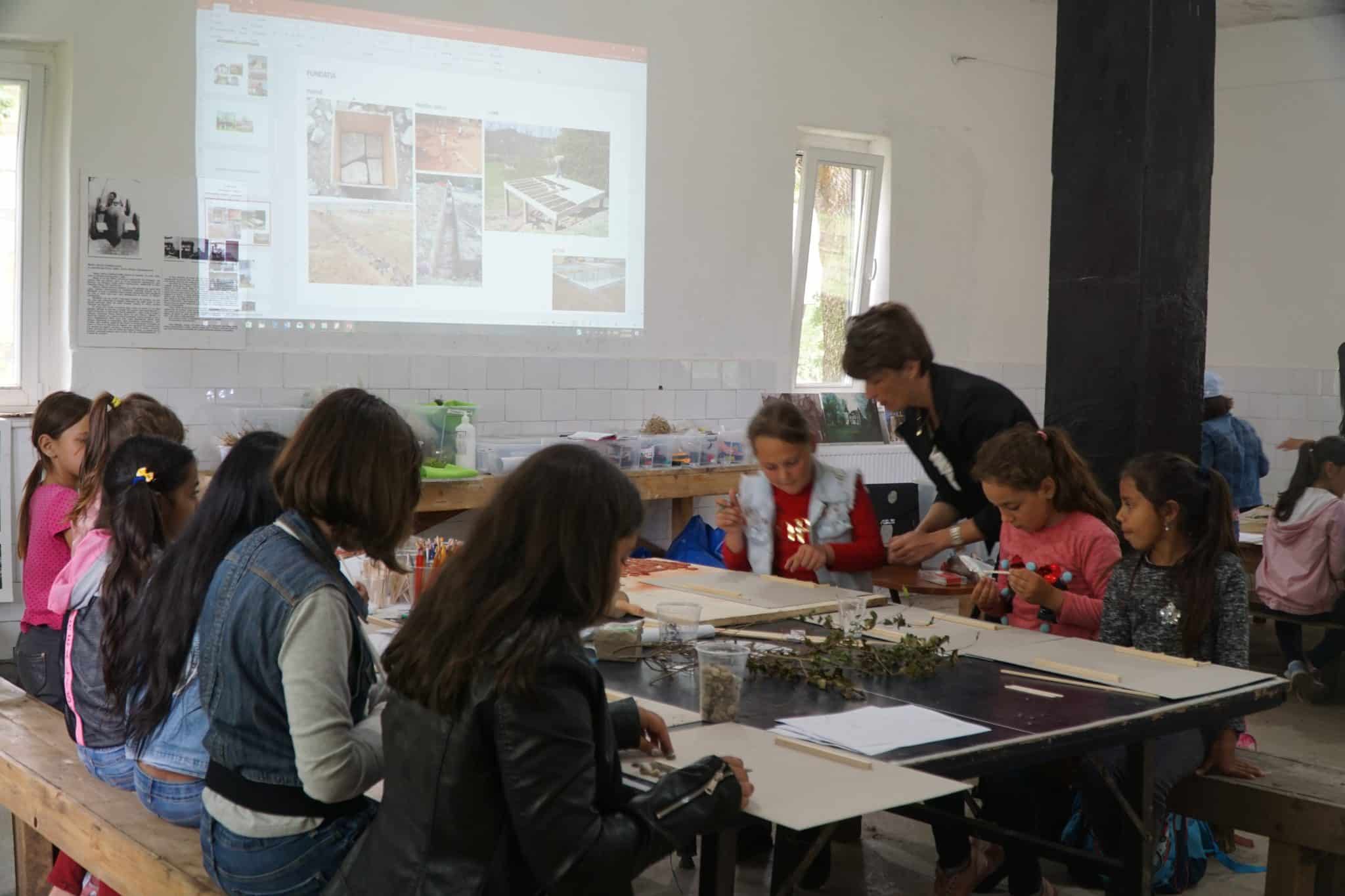
“Workshop 3: The Architect,” May 29 – June 2, 2019
The meetings of May 29 – June 2 brought us closer to what an architect understands by “beautiful house”, how he can obtain one, what craftsmen he will work with and what materials he will use. At the same time, we agreed that a valuable house is also a house full of stories, and that is why we chose a creative approach even to the idea of “home”.
The communities of Izvoru, Olari and Câmpulung Muscel responded unexpectedly well to the challenges not exactly easy to build their own models of “beautiful” houses in different stages of construction, using local materials and alternative construction techniques: both old and contemporary. The project “at home” wanted to be a replica of their own house, attached to a personal box of memories, in which the children were invited to hide their most beautiful memories gathered in the family space. The project also involved testing a new mechanized tool for wooden tracery, namely the electric saw.
And since it was the 1st of June, we had biscuits, juice and the joy at the end of a project… along with the promise to meet again on new Pro Patrimonio heritage adventures.
Biscuits, juices and merry-go-round, as of June 1 … and the promise to see you again with new heritage adventures made by Pro Patrimonio!
Cultural project co-financed by AFCN. The project does not necessarily represent the position of the Administration of the National Cultural Fund. AFCN is not responsible for the content of the project or how the results of the project can be used. These are entirely the responsibility of the beneficiary of the financing.
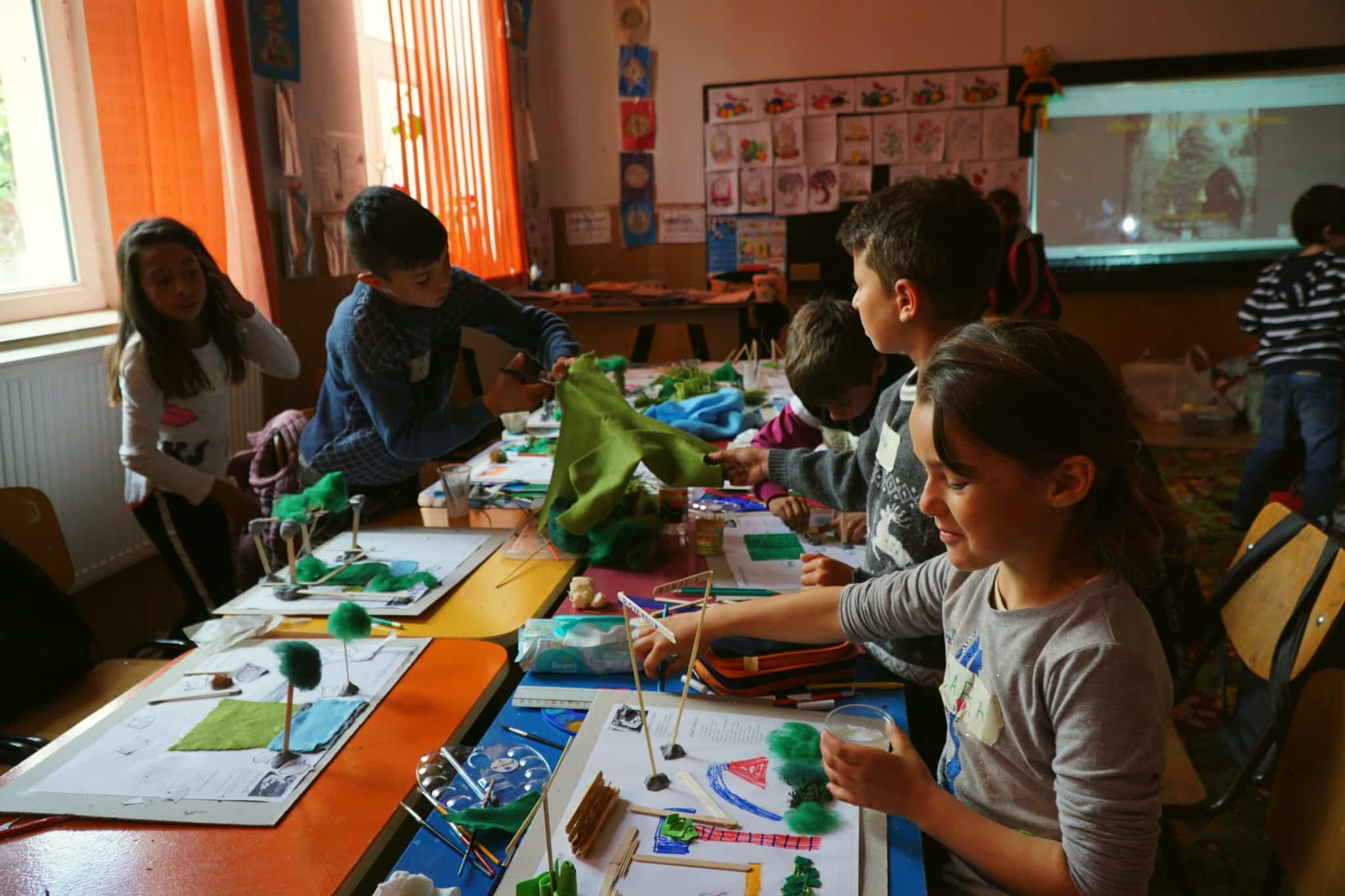
“Workshop 2: The Landscape Designer” May 10-12, 2019
The project „Education for Heritage” gathered a new string of stories and adventures between May 10 and 12 2019 in the school courtyards in the local communities of Izvoru, Olari and Câmpulung Muscel. The children got acquainted with the world of landscape designers and found out what they do and why they are useful. Then got to play their role giving creative, responsible and sympathetic responses to the challenge of having to set up their own school yards according to custom-made plans.
We then changed the scale of the works and aimed for a human-sized model, namely an outdoor pavilion of hazelnuts. We chose the most suitable place in the school yard and started the construction of a small space for relaxing, playing and growing vegetables. We trained their attention and patience to be able to carefully handle not only the reeds, but also the different tools needed: scissors, drill or “mouse”. In parallel, we worked to create a series of seedlings that the children will take care of and then plant with us right at the base of the structure, the wicker pavilion thus becoming a growth support for beans, cucumbers, pumpkins or peas.
The work was not without reward, so that the small landscape designers finally had the opportunity to even experience part of the future culinary micro-landscape created, testing some of the freshly planted vegetables in the form of vegetarian wrappings with hot pies and unique tastes.
We enjoyed around six hours of patience and enthusiasm from the children of each workshop held in the three communities. We know for sure that we planted the seeds of possible future landscape designers in over 15 people from each location and that we felt excellent together with teachers, parents, volunteers and other helpers who appeared during one of the most beautiful building adventures in the series of heritage meetings around Perticari-Davila Manor, Neamțu Manor and Golescu Villa.
We thank the dedicated team of volunteers, Ana Luiza Simion and Anda Tănase, the specialist behind the video camera, Alin Iacob and his little assistant Andrei, and especially the teachers and school principals who have given us all the support necessary to build the three pavilions in the courtyards of the schools from Olari, Izvoru and from the “Carol I” Pedagogical High School in Câmpulung Muscel.
Cultural project co-financed by AFCN. The project does not necessarily represent the position of the Administration of the National Cultural Fund. AFCN is not responsible for the content of the project or how the results of the project can be used. These are entirely the responsibility of the beneficiary of the financing.
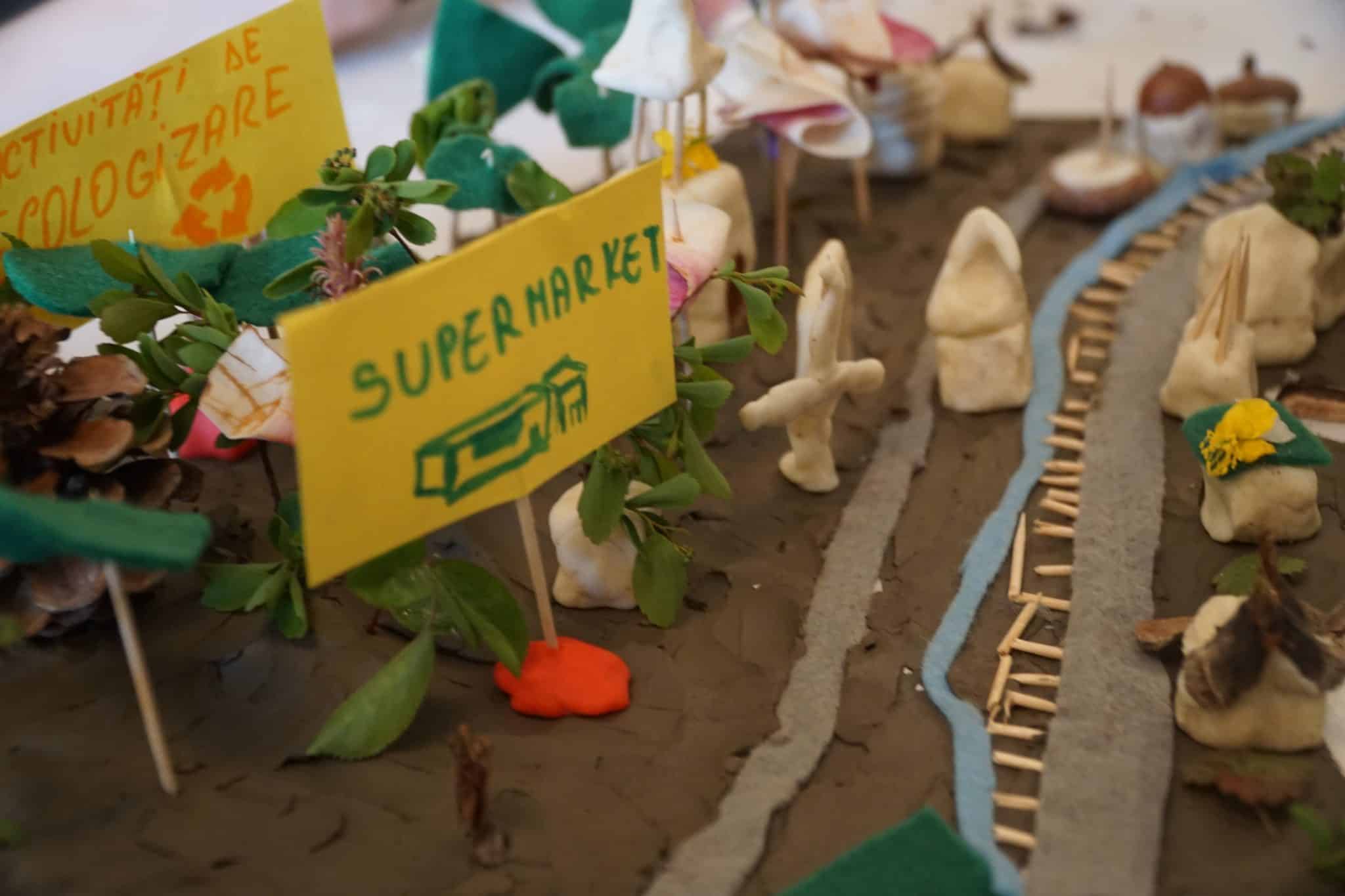
“Workshop 1: The Urban Planner”, 20 to 21 April 2019
The meetings of the heritage workshops have turned into an educational module dedicated to the communities of children gathered around the three monuments we deal with. The project started this year on April 20-21 with workshops on the theme “the urban planner” held in Olari and Câmpulung Muscel.
The children were enthusiastic about the new discoveries, the theoretical foundation thus became friendlier due to the practical perspective: they established where they are on the Romanian map and marked a few cultural exploration options around the manor and the villa with the indications of distance and means of transport available, thus making county cultural maps and tourist indicator posts.
Emotional maps were the means by which the children from Olari could outline their own universe with the spaces they love in the village and the city, and the great model was the challenge by means which the dwellers of Câmpulung managed to overlap the built and green layers of the city, to mark the access roads, the water route, heritage houses, landmark buildings, but especially they marked the interventions they would propose in the city according to the identified needs
The workshops gathered 15 children and a teacher in the community from Olari and almost 30 children and 3 teachers in the community from Câmpulung Muscel.
Cultural project co-financed by AFCN. The project does not necessarily represent the position of the Administration of the National Cultural Fund. AFCN is not responsible for the content of the project or how the results of the project can be used. These are entirely the responsibility of the beneficiary of the financing.
Tablou activitati “Workshop 1: The Urban Planner”, 20 to 21 April 2019

